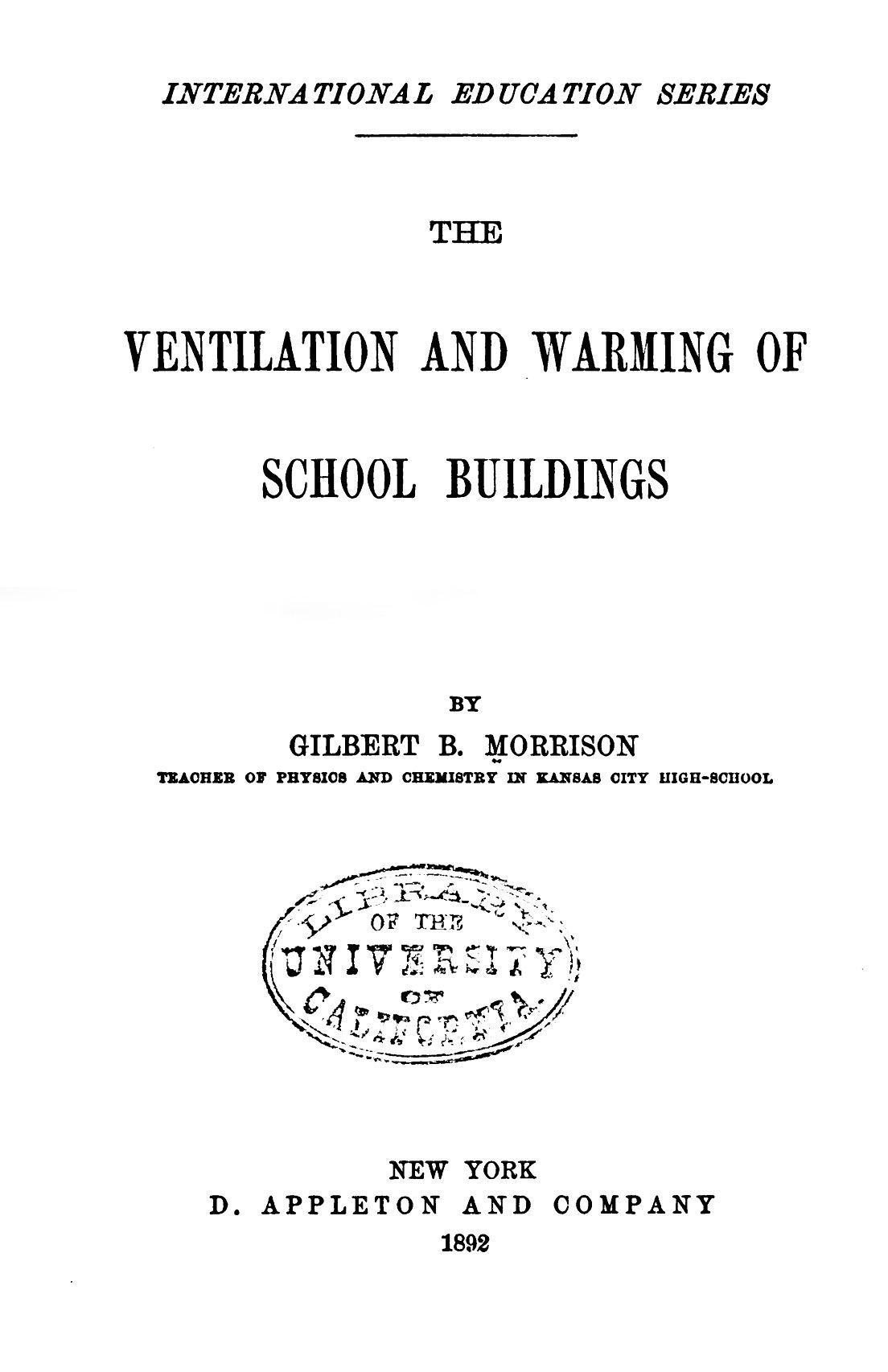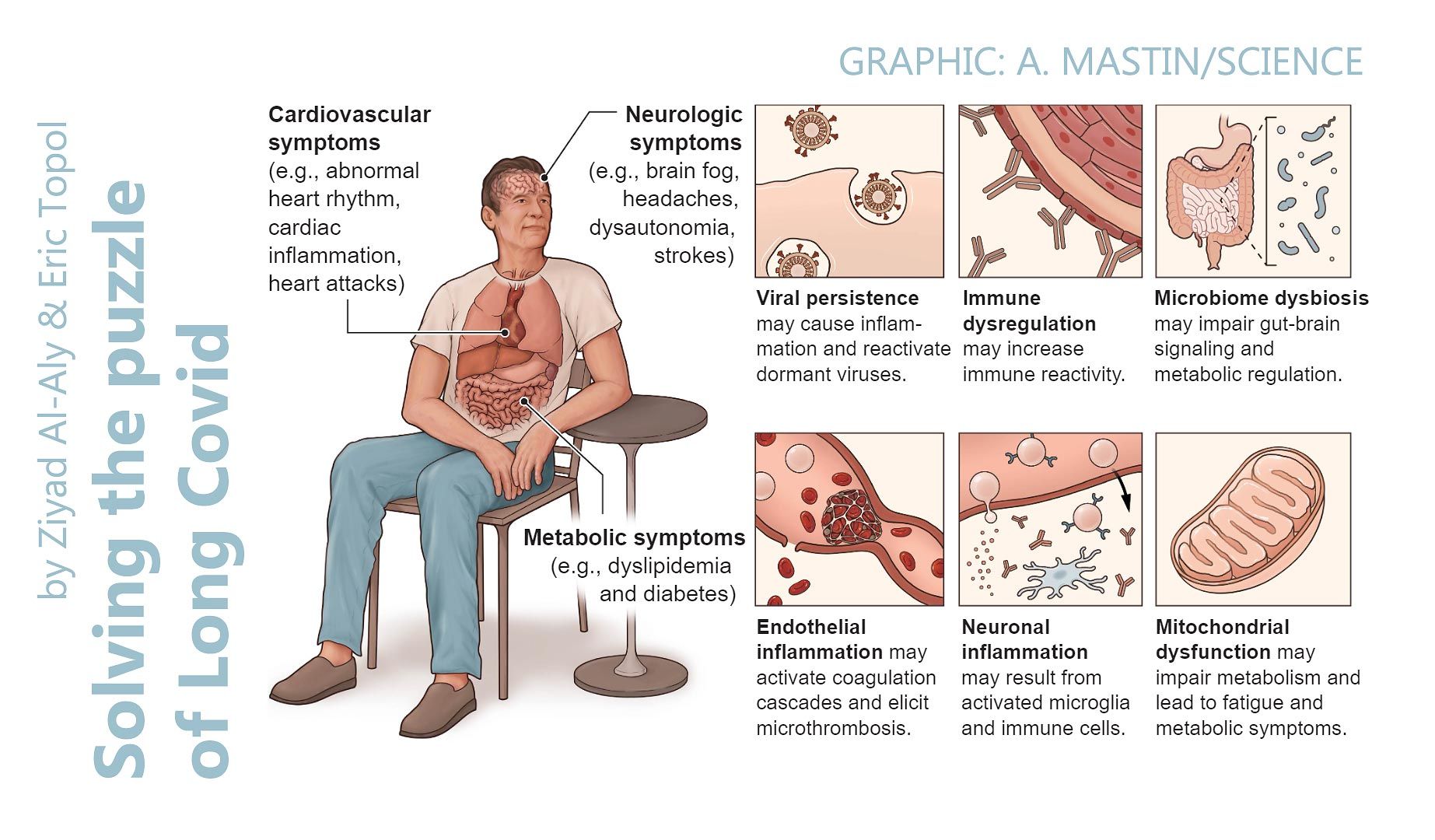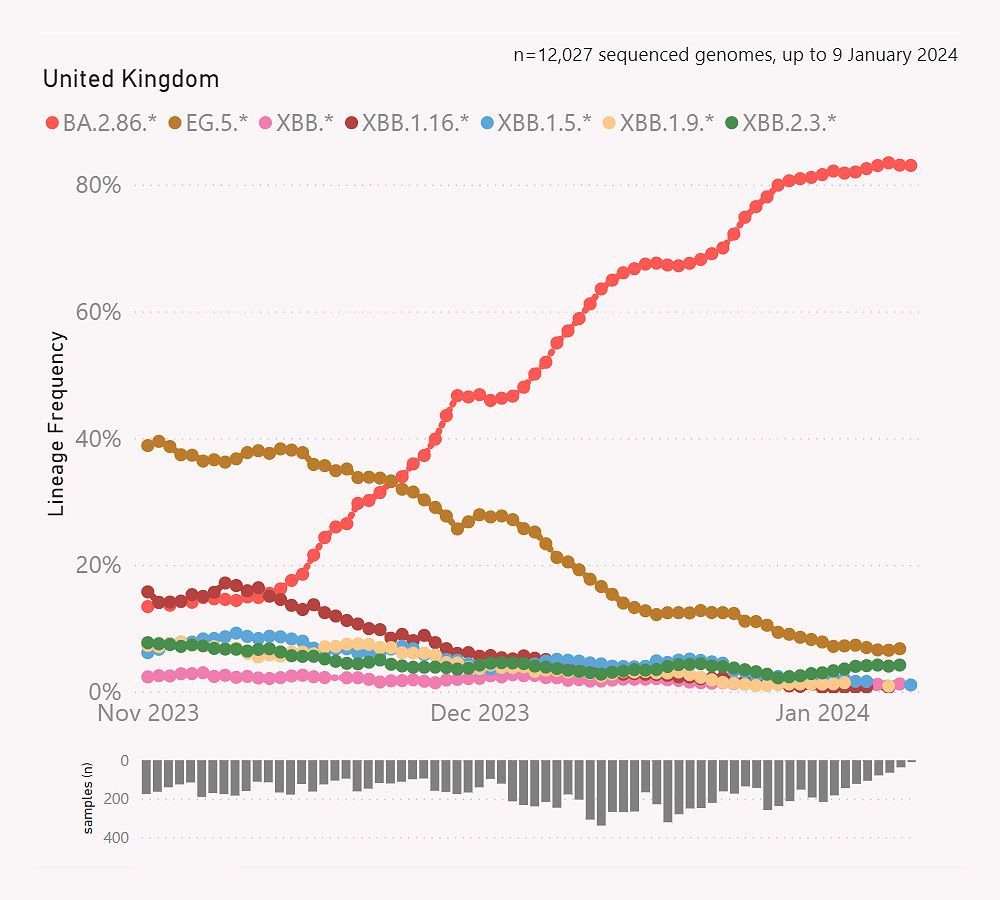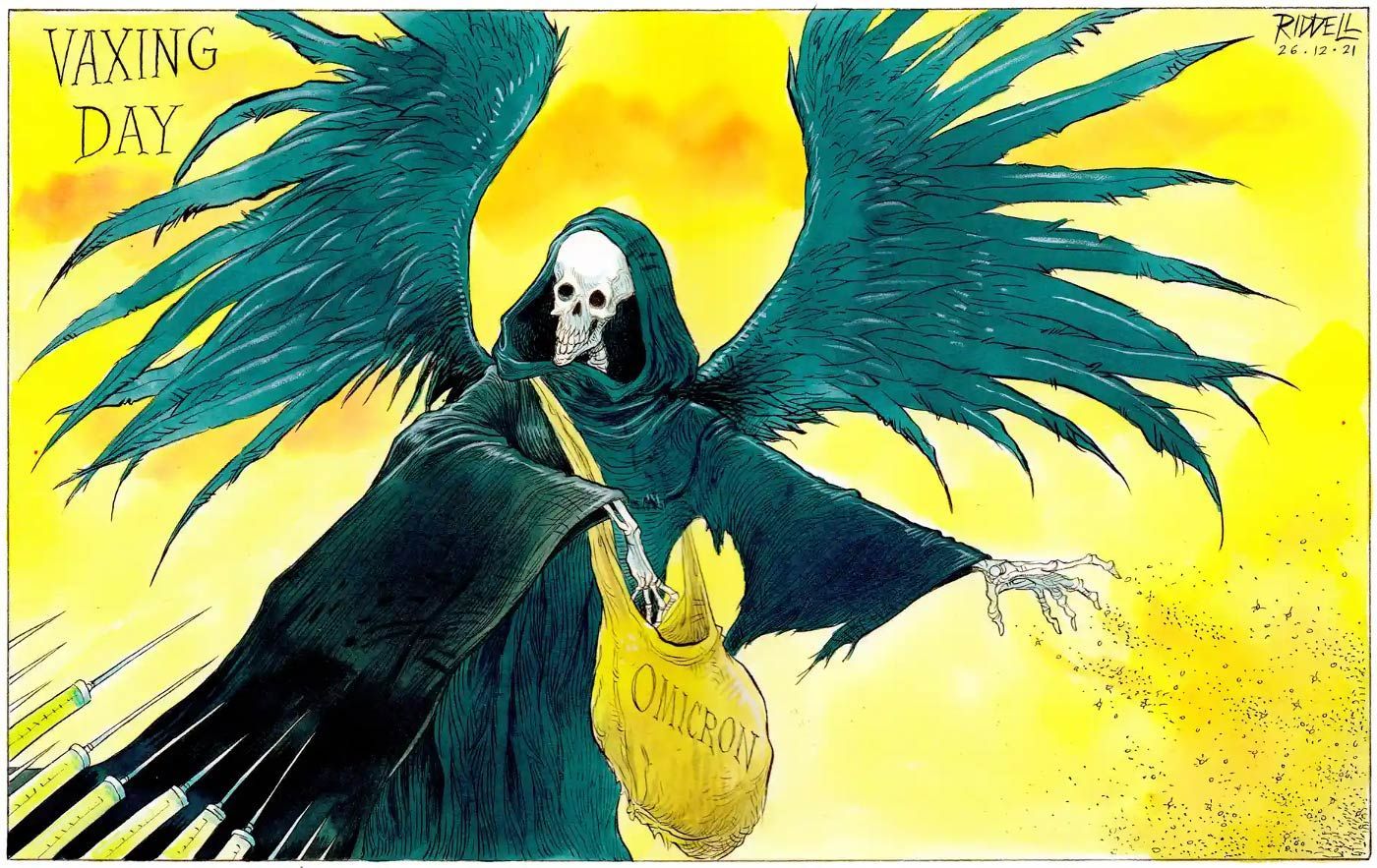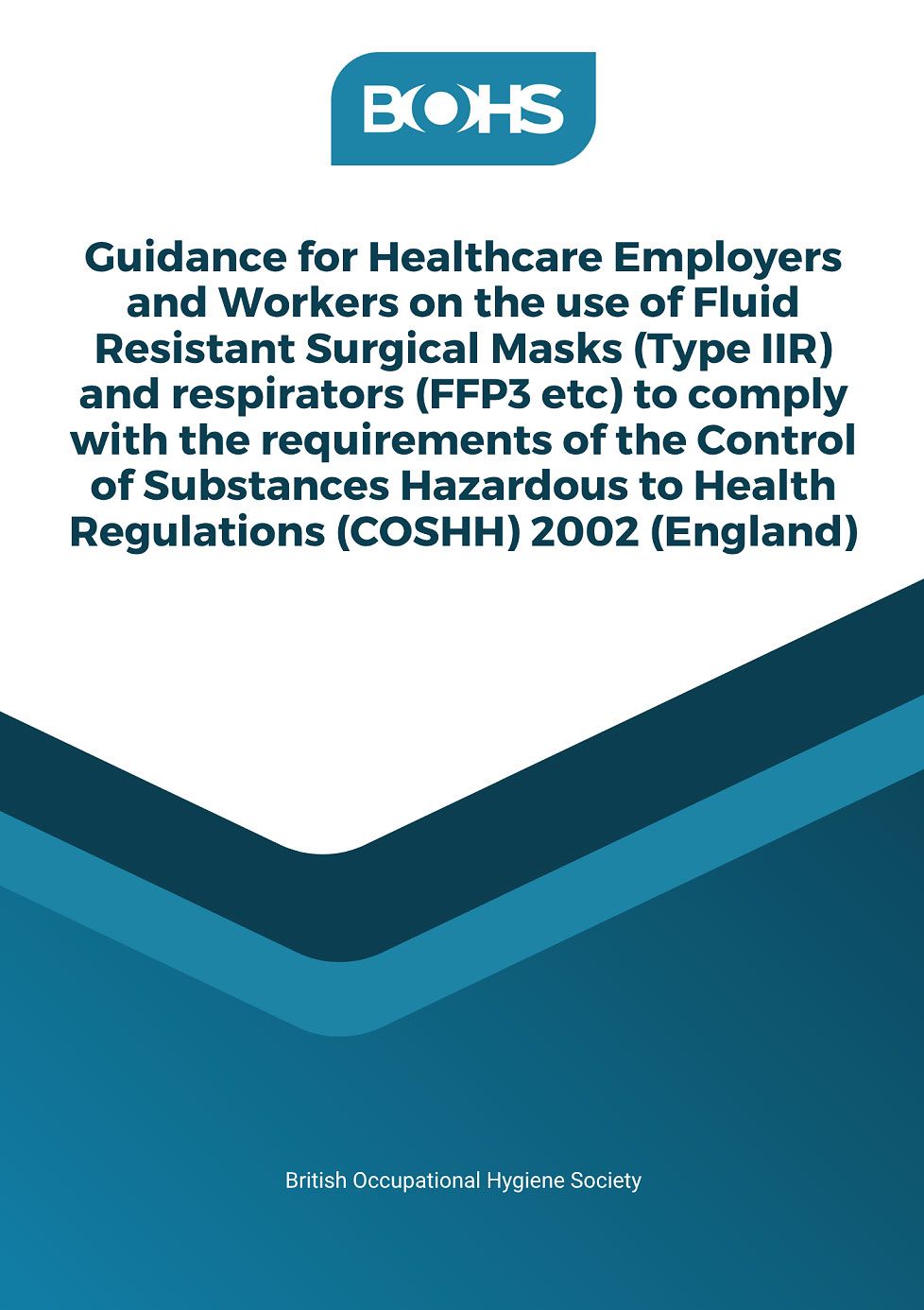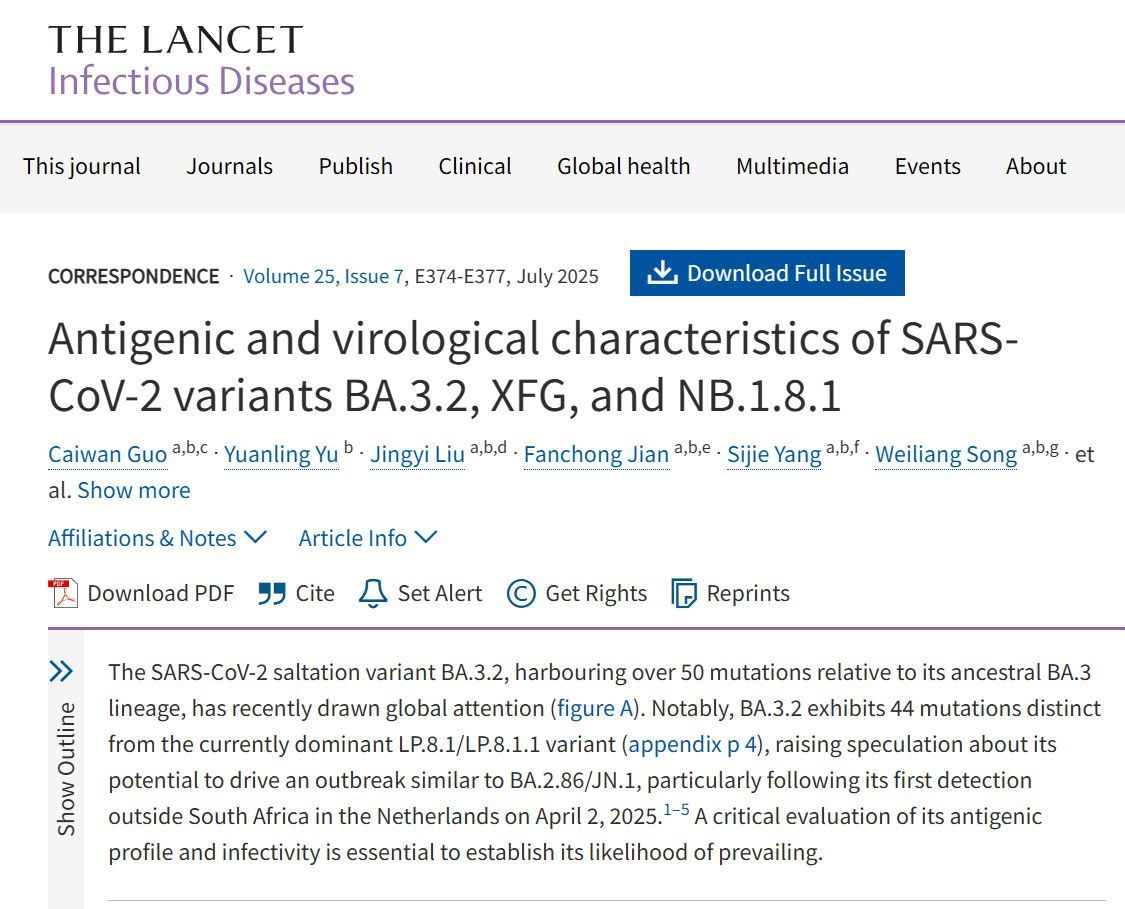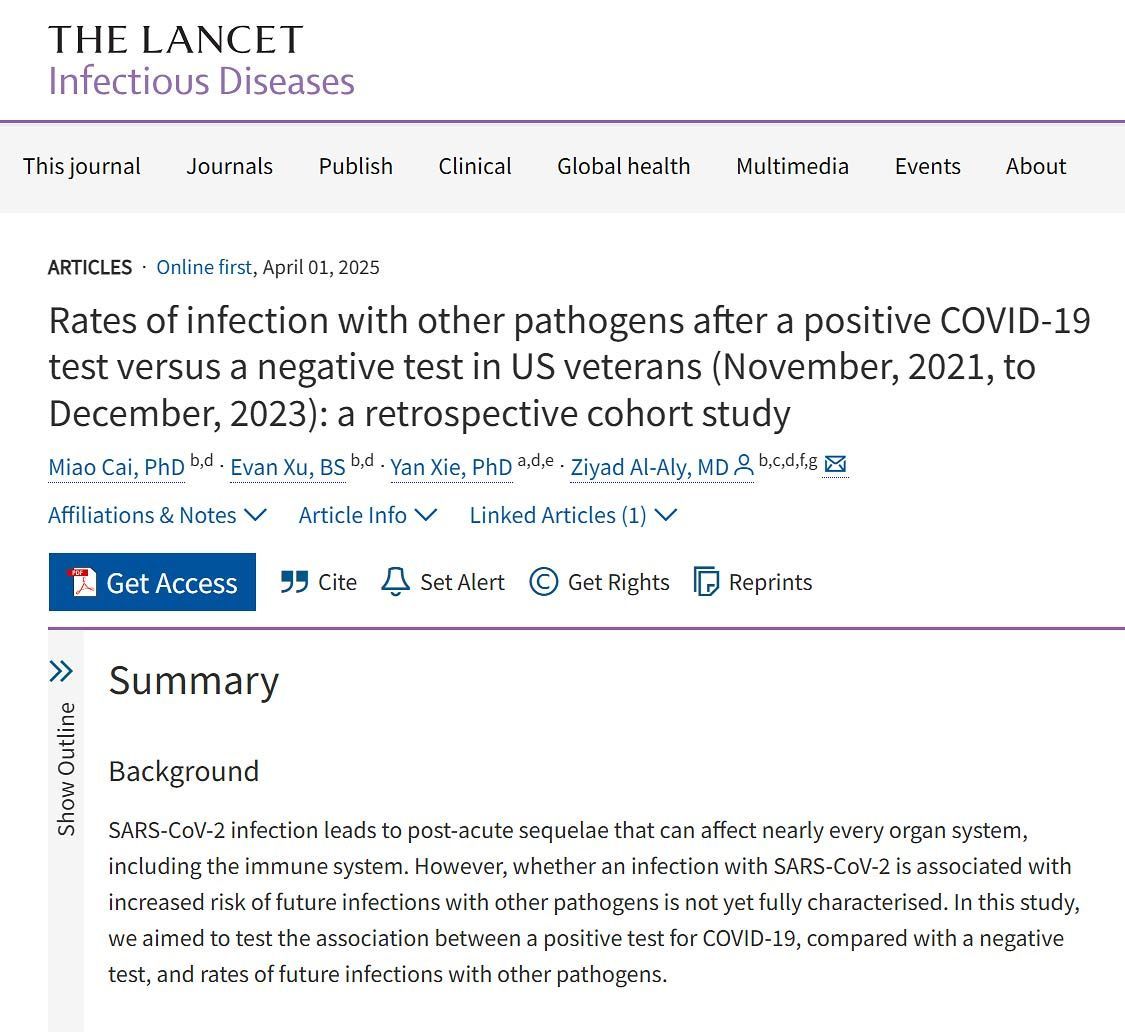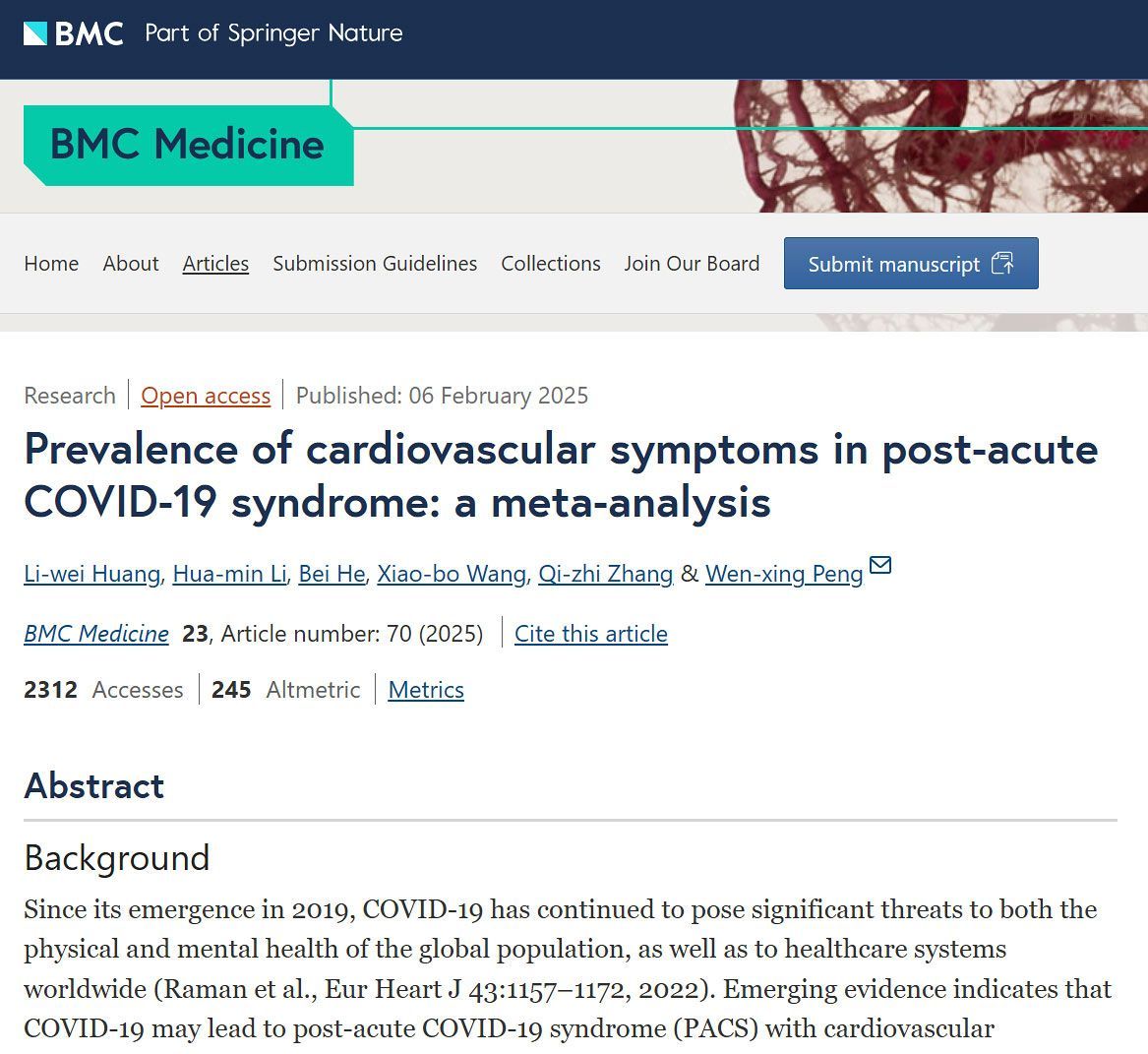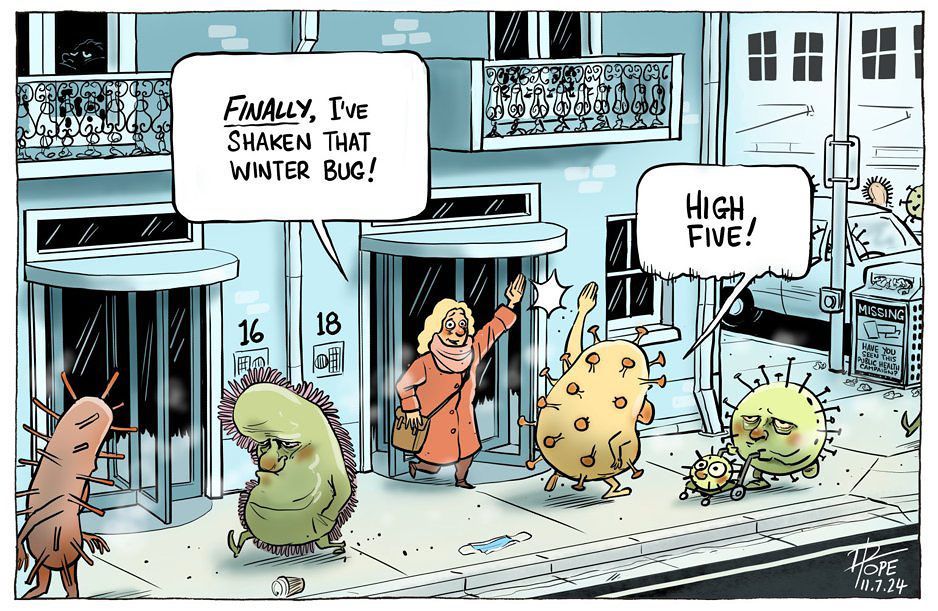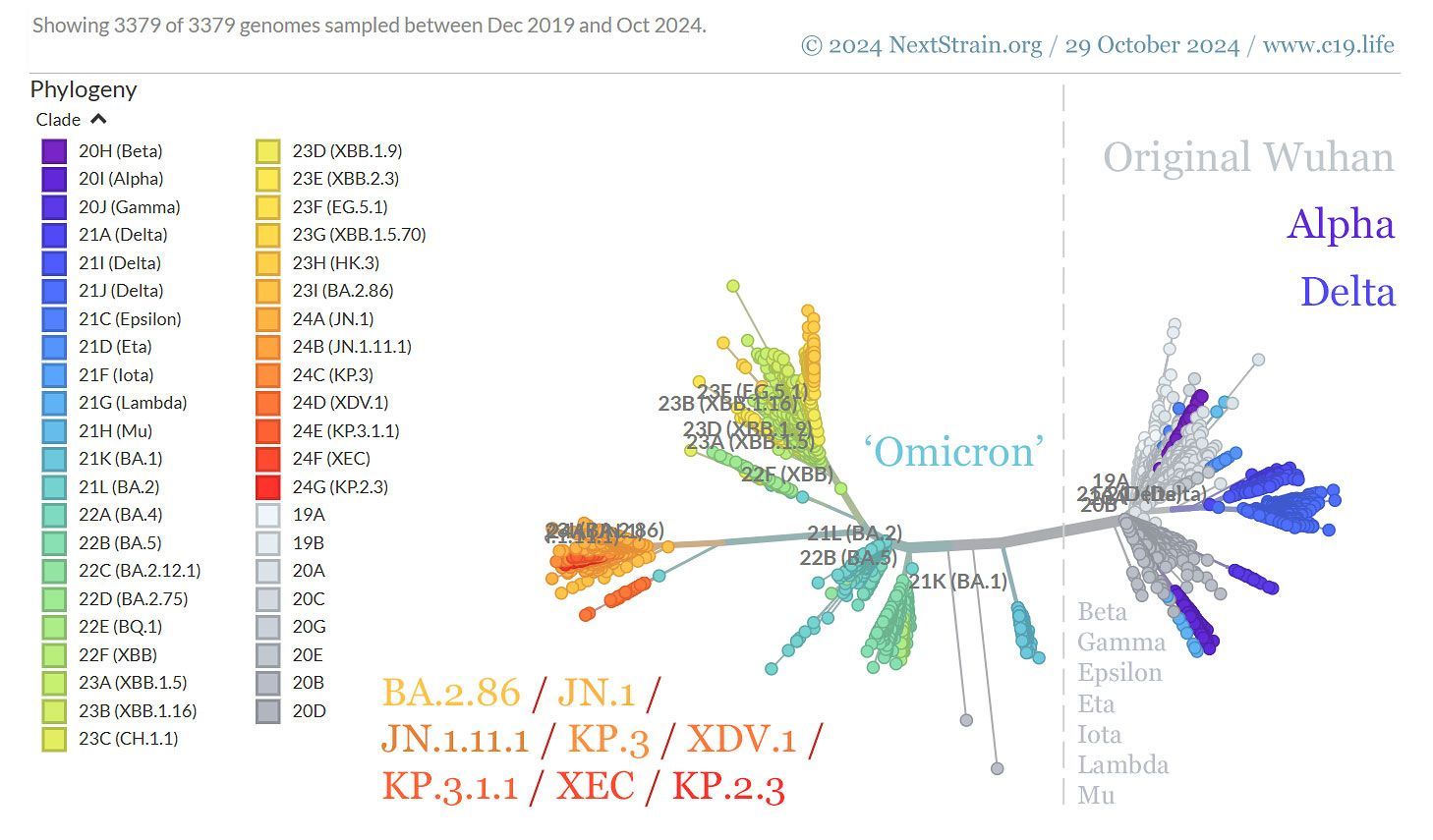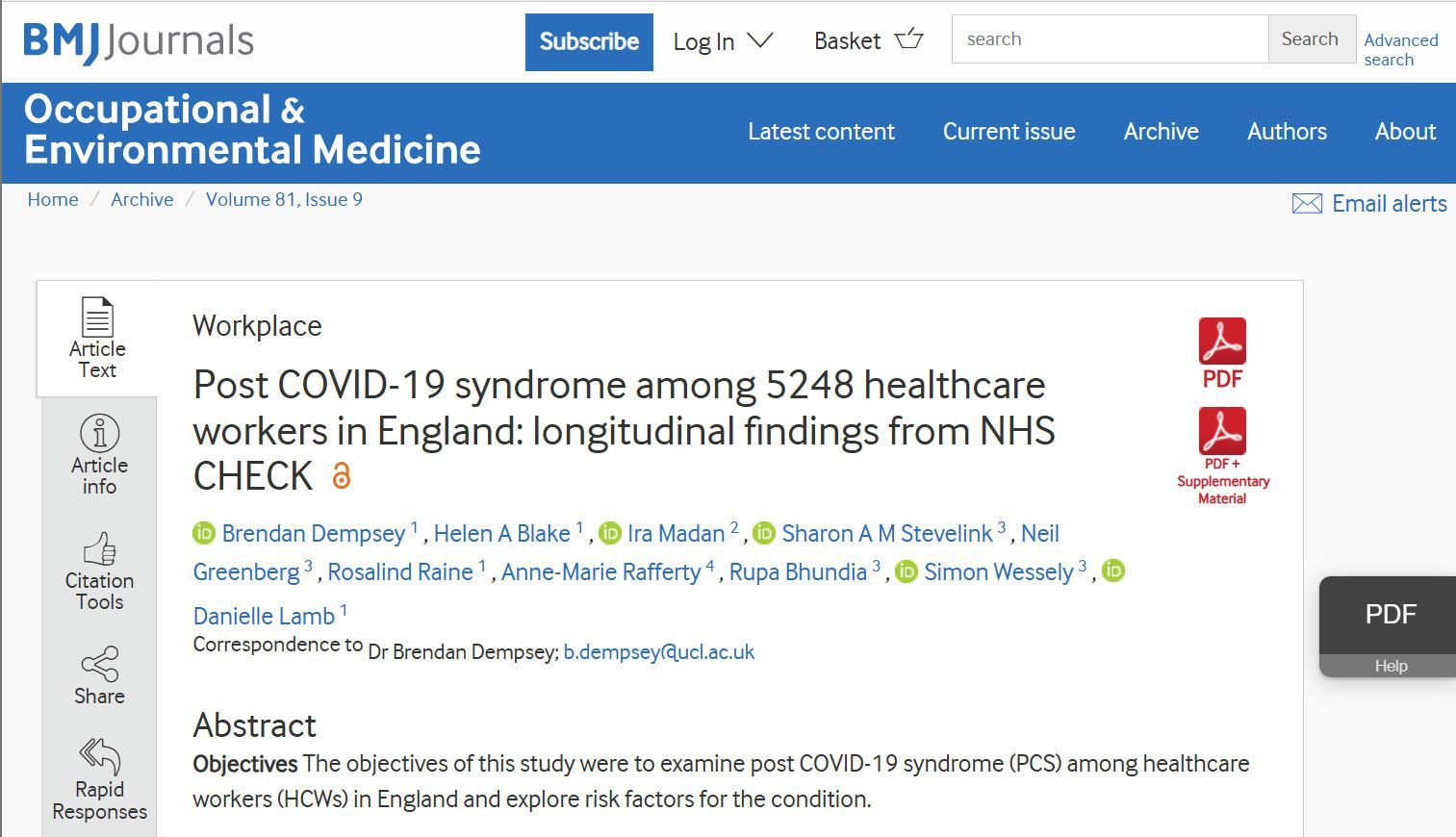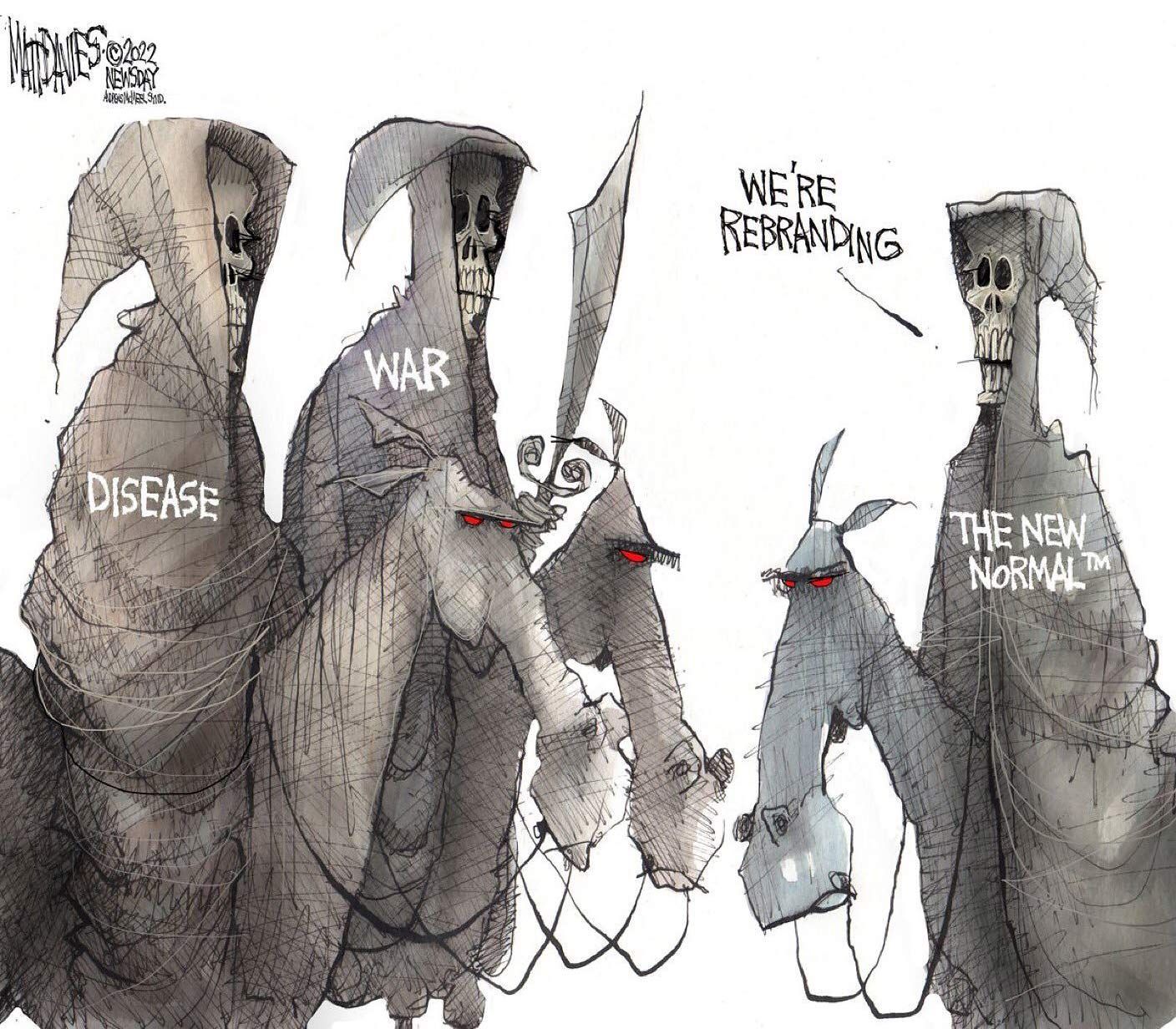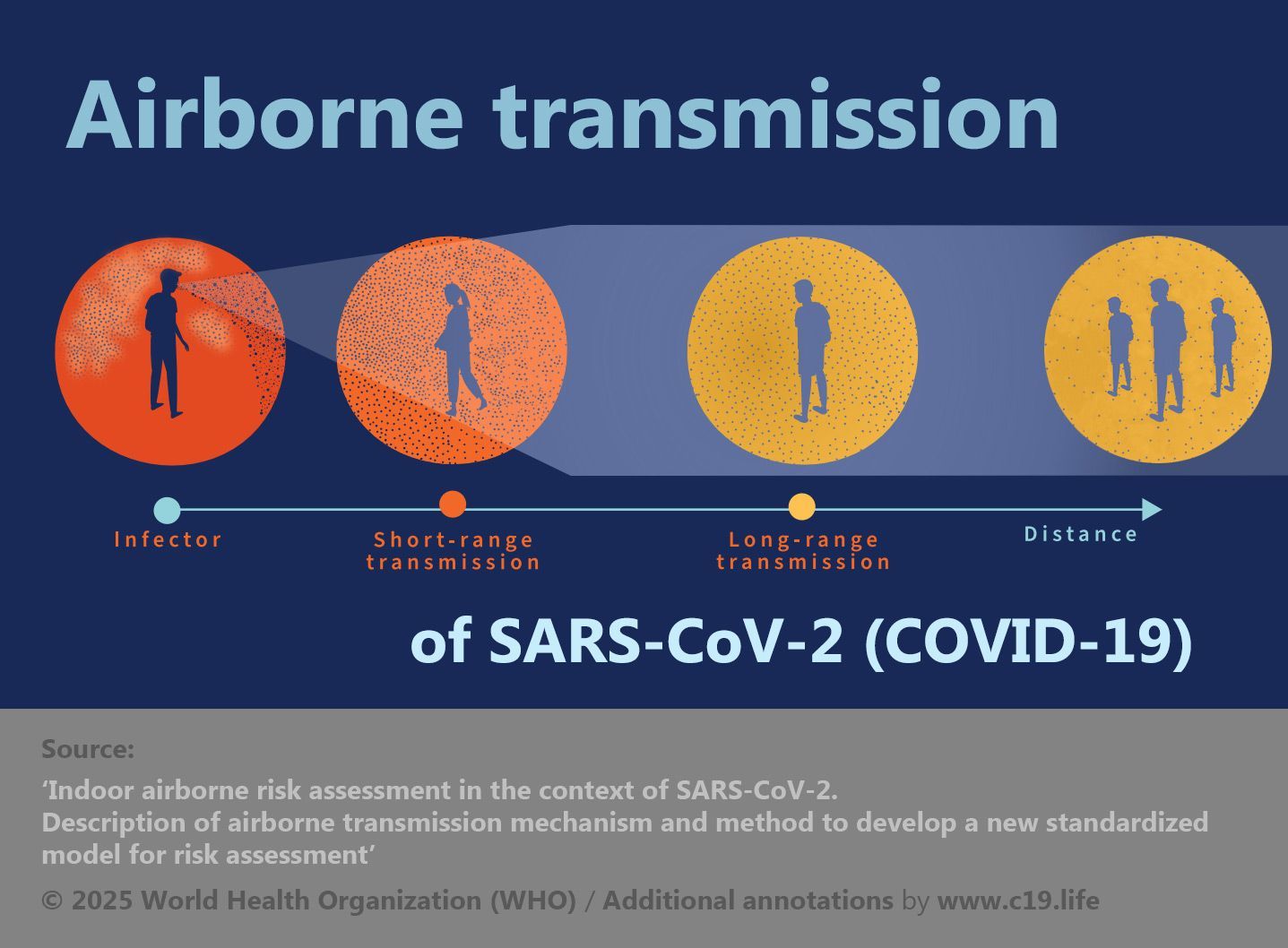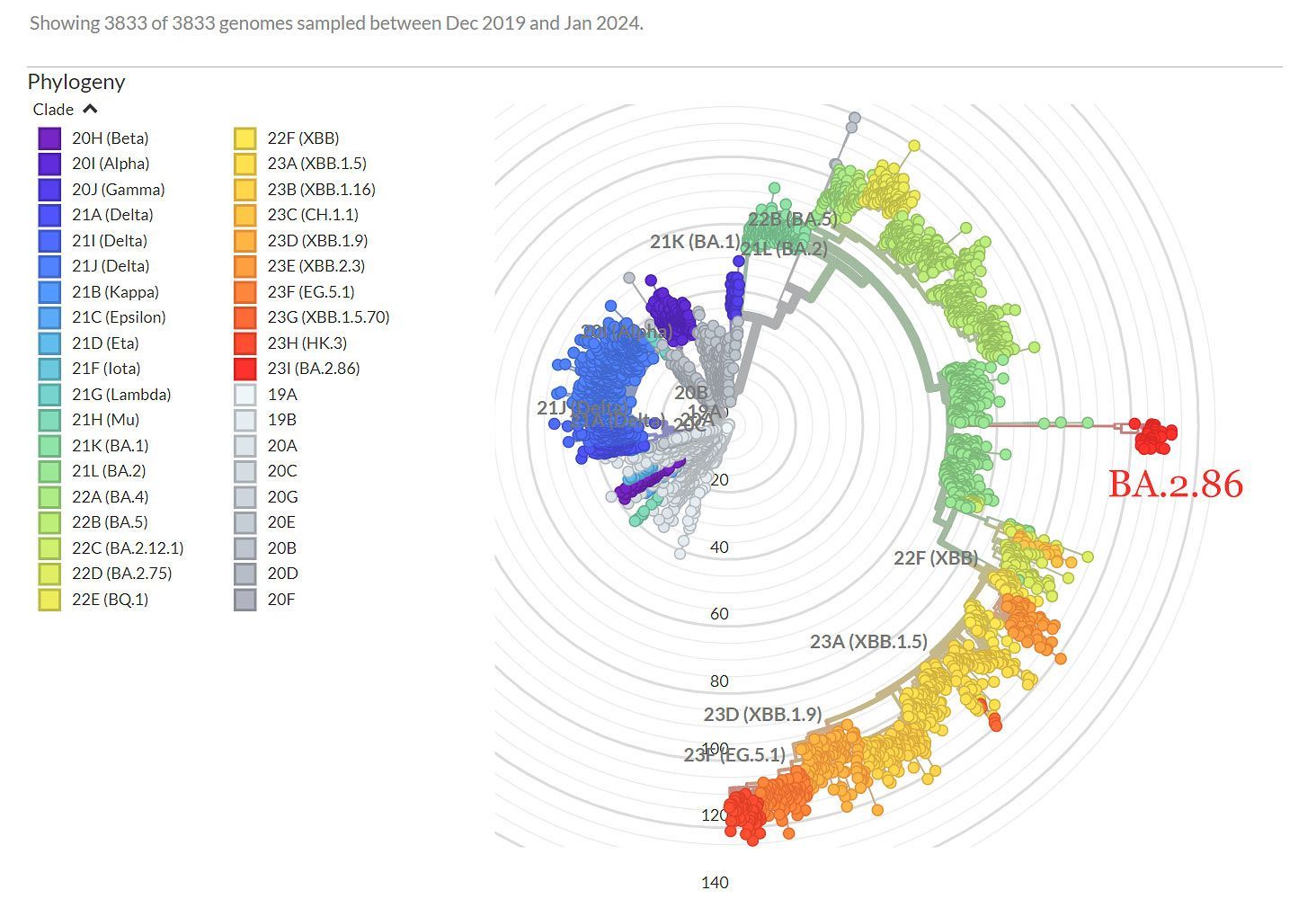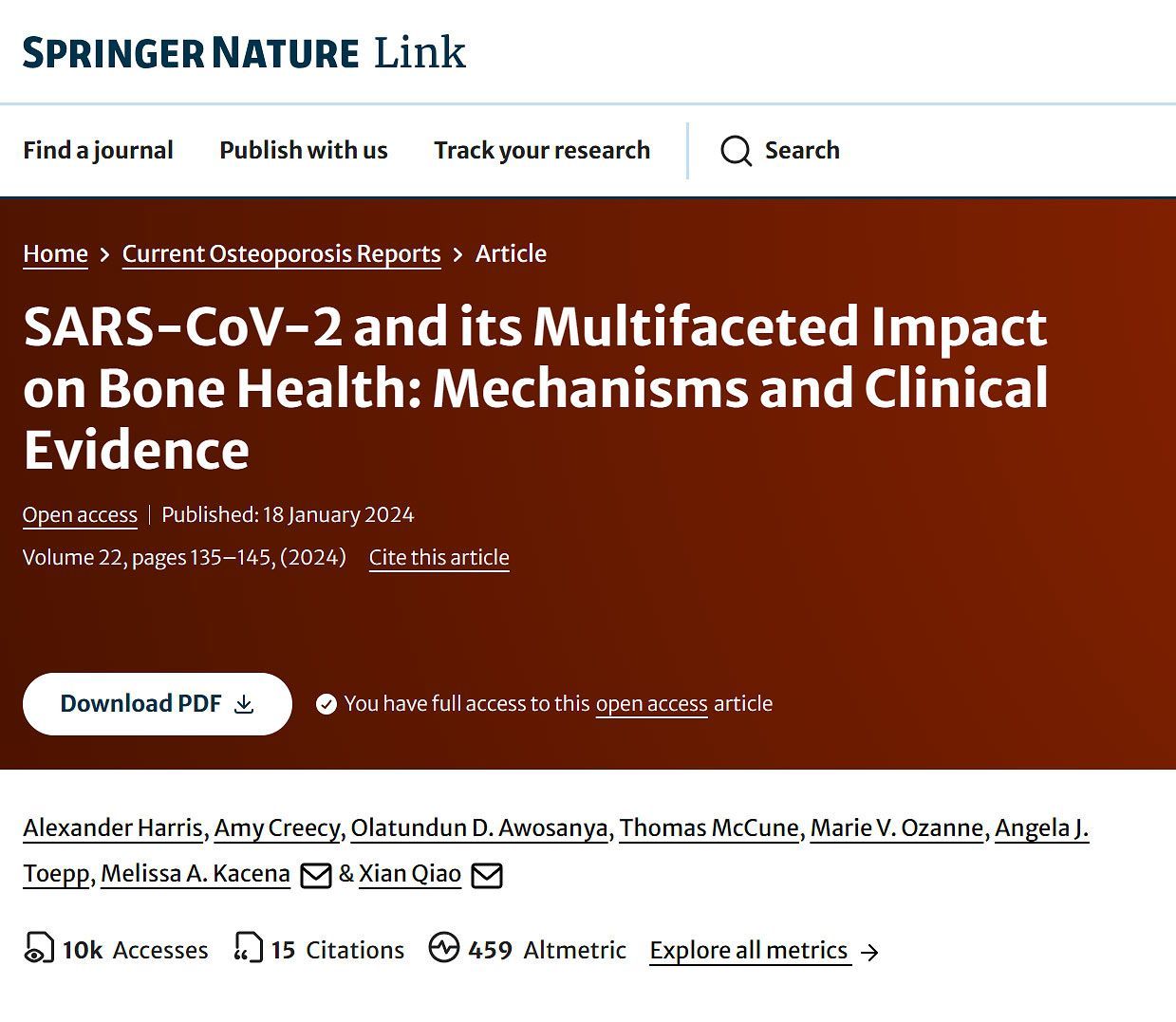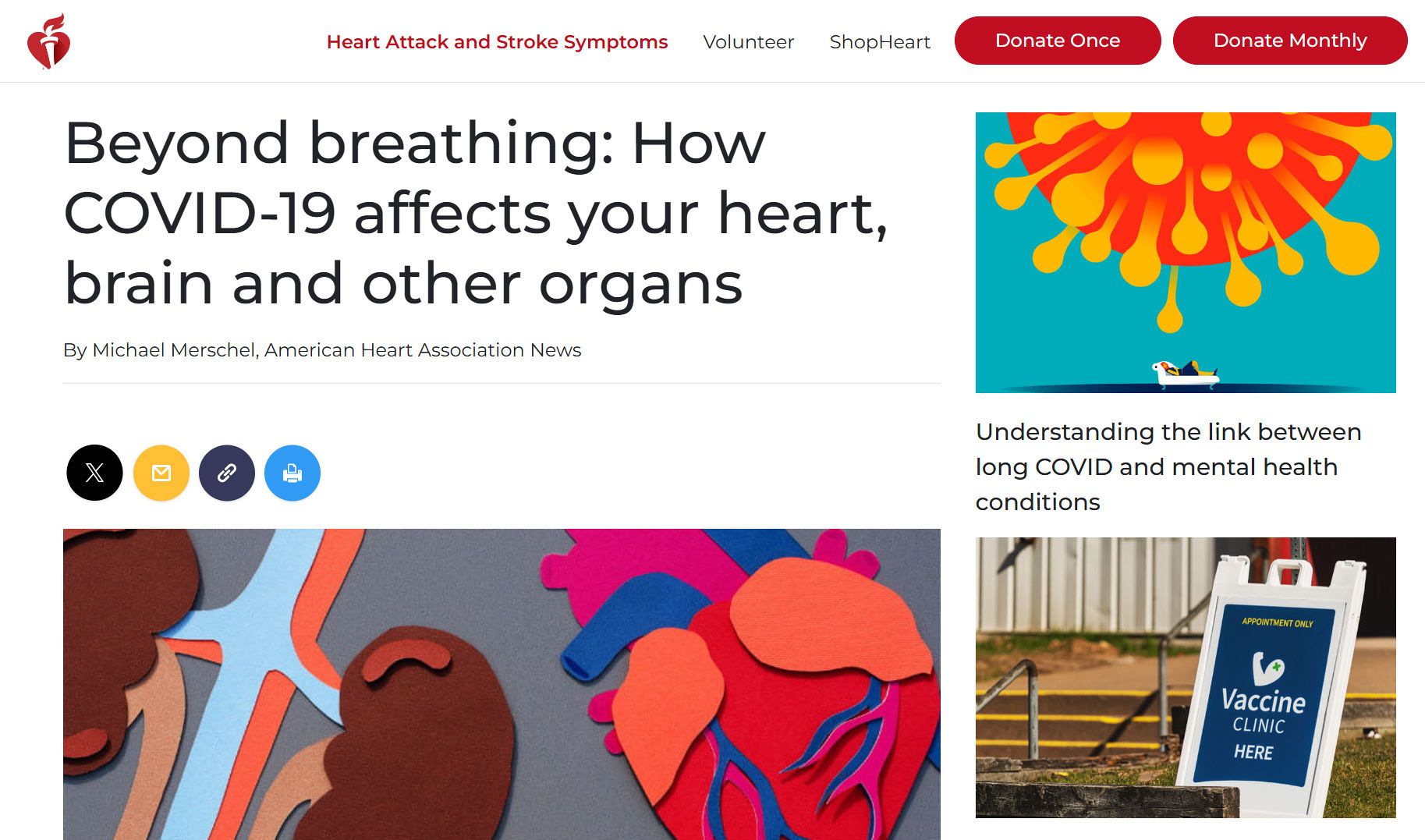‘Although COVID-19 was originally considered a respiratory illness, it is now well established that SARS-CoV-2 infection can have far-reaching impacts on the nervous system.
Common neurological symptoms in Long COVID
[PASC] include new-onset cognitive difficulties, dysautonomia, fatigue, and peripheral neuropathy.’
from
‘Neuroimmune pathophysiology of long COVID’
by
Moen
et al
/
Psychiatry and Clinical Neurosciences (2025).
❦
Dysautonomia is a condition in which the
autonomic nervous system (ANS) does not work properly. This condition may affect the functioning of the
heart,
bladder,
intestines,
sweat glands,
pupils, and
blood vessels.
📖
(13 Sep 2022 ~ Science Daily / Journal of Alzheimer’s Disease)
Risk for Developing Alzheimer’s Disease Increases by 50-80% In Older Adults Who Caught COVID-19 ➲
‘Older people who were infected with COVID-19 show a substantially higher risk – as much as 50% to 80% higher than a control group – of developing Alzheimer’s disease within a year, according to a study of more than 6 million patients 65 and older.
And the highest risk was observed in women at least 85 years old.
The findings showed that the risk for developing Alzheimer’s disease in older people nearly doubled (0.35% to 0.68%) over a one-year period following infection with COVID-19.’
© 2022
Science Daily / Davis
et al
~ Journal of Alzheimer’s Disease.
📖
(19 Apr 2023 ~ Nature Scientific Reports)
Cognitive impairment in young adults with post COVID-19 syndrome ➤
‘Regarding the different cognitive functions, our results reveal that
attention
is the one that shows the greatest deficit, regardless of the age of the patients (more than 25%
of patients in
each age group
exhibit a
moderate attention deficit).
Processing speed
was also a cognitive process that was impaired relatively homogeneously across age groups; however, the results indicate that the
youngest patients
show a
much slower processing speed
(33.3%
of those
under 50 years of age) compared to the oldest (5.1%
of those
over 50
years of age).
The
highest percentage
of patients with
severe verbal memory impairment
was also found in the
younger patients
group.
In
long-term memory,
20.7%
of the
youngest group
showed a
severe deficit
and
24.1%
a
mild impairment, while a minimum proportion of the elderly showed alterations in this area.
The results presented here reveal that
at least 85%
of the participants
exhibit deficits
in one neuropsychological test.
Also, the
youngest patients
were those who showed the
most marked
and
heterogeneous
cognitive impairment.’
© 2023
Herrera
et al
/ Nature Scientific Reports.
📖
(27 Feb 2024 ~ Nature Scientific Reports)
Neuroimaging findings in children with COVID-19 infection: a systematic review and meta-analysis ➤
‘Initially focused on respiratory symptoms, it’s now clear that COVID-19 presents a complex clinical picture affecting various organ systems.
Our findings reveal that a substantial proportion of pediatric COVID-19 patients with neurological symptoms exhibit abnormal neuroimaging findings, with 43.74% of children in the included studies demonstrating such abnormalities.’
© 2024
Safadieh
et al
/ Nature Scientific Reports.
📖
(11 Nov 2025 ~ Nature Pediatric Research)
Neurological and neurodevelopmental effects of Covid and MIS-C on children ➤
‘While the respiratory symptoms of COVID-19 have dominated the early narratives of the disease, it has become increasingly clear that the virus’s impact stretches far beyond the lungs.
The pediatric population, once thought to be relatively spared from severe outcomes, has presented with significant neurological manifestations that raise concerns about the short- and long-term effects of SARS-CoV-2 on the developing nervous system.’
Lay-person’s overview:
📖 (12 Nov 2025 ~ Bioengineer)
Neurological Impacts of COVID and MIS-C in Children ➤
© 2025
Byrne
et al
~ Nature Pediatric Research
/
Bioengineer.
📖
(16 Jan 2023 ~ Brain)
Haemorrhage of human foetal cortex associated with SARS-CoV-2 infection ➤
‘Strikingly, the
[foetal brain]
haemorrhages are predominantly found in the late first and early second trimester of gestation.
Specifically, the majority were between 12 and 14 PCW
[post-conception week], a critical window of human foetal brain development when the endothelial tight junctions increase to form the blood-brain barrier (BBB).
Our observations of disrupted foetal cerebral vasculature are consistent with reports of damage to the microvasculature of the adult brain in SARS-CoV-2 infected patients.’
© 2023
Massimo
et al
/ Brain.
📖
(1 Oct 2023 ~ New Atlas / Nature Communications)
All variants of COVID-19 can infect the brain, study finds ➲
‘Interestingly, the findings confirmed epidemiological observations showing acute disease severity is reduced in Omicron infections – however, all
[SARS-CoV-2]
variants demonstrated similar neuroinvasive capabilities.
And, most strikingly, all variants infected the brain’s olfactory regions regardless of whether symptoms of anosmia (the loss of sense of smell) were present or not.’
© 2023
Rich Haridy ~ New Atlas / Dias de Melo
et al
~ Nature Communications.
‘Researchers have found evidence that the COVID-causing virus,
SARS-CoV-2, can
reach the brain
and other parts of the
central nervous system. This contact may lead to persistent and devastating symptoms of
PASC
(Post-Acute Sequelae of COVID-19, or ‘long COVID’), which – more and more scientists say – appears to be a
neurological disease.
Cognitive symptoms
include
difficulty thinking
and
remembering things.
And
physical ailments, such as
pain,
extreme fatigue
and a
racing heartbeat, are tied to problems with the
autonomic nervous system, which ordinarily runs our bodies on autopilot.’
From
(1 Mar 2023 ~ Scientific American)
Long COVID now looks like a neurological disease, helping doctors to focus treatments ➤
📖
(19 Jun 2025 ~ Psychiatry and Clinical Neurosciences)
Neuroimmune pathophysiology of long COVID ➤
‘Despite the perception that COVID-19 is now a mild disease, there is overwhelming evidence indicating that SARS-CoV-2 infection is capable of producing widespread post-acute sequelae in a significant percentage of infections.
This includes a substantial impact on the nervous system resulting from a combination of direct infection, systemic inflammation, immune dysfunction, vascular complications, and tissue hypoxia.’
© 2025
Moen
et al
/
Psychiatry and Clinical Neurosciences.
❦
Brain damage is a term that describes the
destruction or
degeneration of
brain cells, which can result from various causes such as
trauma,
stroke,
tumours,
infection,
lack of oxygen, or
other illnesses.
Brain damage
can be
categorised
into
two main types:
- Traumatic Brain Injury
(TBI), caused by an
external force
like a
blow to the head
or a
penetrating object
- and
Acquired Brain Injury
(ABI), which occurs at the
cellular level and is
often associated with conditions like
stroke,
tumours, or
anoxia.
- Significant ABI
can be caused by
viral,
bacterial
and
fungal infections.
Brain damage can be
focal
– affecting a
specific area
– or
diffuse, involving
multiple areas
of the brain.
Brain damage can lead to a
range of impairments
in
cognitive,
physical,
emotional, or
independent functioning –
including problems with
- memory
- attention
- reasoning
- speech
- motor-control
(eg. balance)
- and
psychosocial behaviour.
📖
(22 Feb 2024 ~ Nature Neuroscience)
Blood-brain barrier disruption and sustained systemic inflammation in individuals with long COVID-associated cognitive impairment ➲
‘Our data suggest that sustained systemic inflammation and persistent localized blood-brain barrier (BBB) dysfunction is a key feature of long COVID-associated brain fog.
Patients with long COVID had elevated levels of IL-8, GFAP and TGFβ – with TGFβ specifically increased in the cohort with brain fog.
GFAP
is a
robust marker
of
cerebrovascular damage
and is
elevated
after
repetitive head trauma, reflecting BBB disruption, as seen in
contact sport athletes
and in
individuals
with
self-reported neurological symptoms
in
long COVID.
Interestingly, TGFβ was strongly associated with BBB disruption and structural brain changes.’
© 2024
Greene
et al
/
Nature Neuroscience.
📖
(20 March 2025 ~ Interview with David Putrino ~ Radio-Canada / Canadian Broadcasting Corporation)
Beyond Long COVID – How reinfections could be causing silent long-term organ damage ➤
“There was a recent 2024 study showing us that individuals who survive an acute COVID-19 infection – these are not individuals who are getting diagnosed with long COVID – on average will lose somewhere in the neighbourhood of two to six IQ points per infection.
For the longest time in the field of immunology, there was the sort of adage that your immune system needs to be
tested
every now and again to stay strong.
That’s an old-fashioned idea.
The more new-fashioned and evidence-based idea is that, although your immune system can take on an
infection, you want to avoid testing it as much as possible because your body is sustaining damage with
each infection
that
it survives.”
© 2025
David Putrino / Canadian Broadcasting Corporation (CBC).
❦
SARS-CoV-2 (COVID-19) infections can lead to long-term health effects in nearly every organ system of the body.
✺
Nervous System
- Stroke
- Headaches
- Memory problems
- Problems with smell & taste.
✺
Mental Health
- Anxiety
- Depression
- Sleep problems
- Substance abuse.
✺
Gastrointestinal System
- Constipation
- Diarrhoea
- Acid reflux.
✺
Skin Disorders
✺
Coagulation Disorders
✺
Respiratory System
- Cough
- Shortness of breath
- Low blood oxygen.
✺
Cardiovascular System
- Acute coronary disease
- Heart failure
- Palpitations
- Arrythmias.
✺
Musculoskeletal System
- Joint pain
- Muscle weakness.
✺
Metabolic / Endocrine System
- Obesity
- Diabetes
- High cholestrol.
✺
Kidney
- Acute kidney injury
- Chronic kidney disease (CKD).
✺
General
© 2021 Sara Moser
/ Washington University School of Medicine in St. Louis.
📖
(16 Jan 2024 ~ American Heart Association)
Beyond breathing: How COVID-19 affects your heart, brain and other organs ➲
“I would argue that COVID-19 is not a disease of the lungs at all.
It seems most likely that it is what we call a vascular and neurologic infection, affecting both nerve endings and our cardiovascular system.”
“In addition to the cognitive impairment, we see worsening or new-onset migraines. We see new neuropathy in the legs and the arms – numbness, tingling, difficulty walking – because of the neuropathy.”
© 2024
Michael Merschel
/
American Heart Association.
📖
(22 Sep 2022 ~ Nature Medicine)
Long-term neurologic outcomes of COVID-19 ➤
‘Our results show that in the post-acute phase of COVID-19, there was increased risk of an array of incident neurologic sequelae including ischemic and hemorrhagic stroke, cognition and memory disorders, peripheral nervous system disorders, episodic disorders (for example, migraine and seizures), extrapyramidal and movement disorders, mental health disorders, musculoskeletal disorders, sensory disorders, Guillain-Barré syndrome, and encephalitis or encephalopathy.’
© 2022
Xu, Xie & Al-Aly /
Nature Medicine.
❦
‘The incidence of hospitalisation with cerebral infarction
[ischaemic stroke]
was twice as high after COVID‐19 onset.
Other investigators have estimated the risk of stroke to be 2–13 times as high for people with COVID‐19.’
(The Medical Journal of Australia ~ 2022)
➲
📖
(15 Jul 2023 ~ Acta Neuropathologica)
Vagus nerve inflammation contributes to dysautonomia in COVID-19 ➤
‘Our data suggest that SARS-CoV-2 induces vagus nerve inflammation, followed by autonomic dysfunction, which contributes to critical disease courses.
The vagus nerve could be particularly susceptible to SARS-CoV-2 infection as it is directly innervating the respiratory tract, which is the primary site of infection.’
© 2023
Woo
et al
/
Acta Neuropathologica.
❦
Inflammation of the vagus nerve can lead to autonomic dysfunction, or ‘dysautonomia’.
✺
Autonomic dysfunction
(dysautonomia) is a group of disorders affecting the autonomic nervous system (ANS).
➲
Signs
of
autonomic dysfunction
include:
- Tachycardia
(fast heart-rate)
- Orthostatic hypotension
(dizziness or fainting upon standing)
- Gastrointestinal disorders
(e.g. constipation, diarrhoea, loss of appetite, difficulty swallowing, difficulty digesting food)
- Disturbed bladder function
(e.g. incontinence, difficulty starting urination, incomplete emptying of the bladder)
- Temperature dysregulation
(e.g. sensitivity to heat or cold; cold, discoloured hands and feet)
- Sexual dysfunction
(e.g. difficulty with ejaculation or maintaining an erection; vaginal dryness)
- Vision problems
(e.g. inability of the pupils to react to light quickly; blurred vision)
- Sleep problems.
📖
(15 Jan 2025 ~ Molecular Psychiatry)
Choroid plexus volume is enlarged in long COVID and associated with cognitive and brain changes ➤
‘Patients with post-COVID condition (PCC/PASC) present with diverse symptoms which persist at long-term after SARS-CoV-2 infection.
Among these symptoms, cognitive impairment is one of the most prevalent and has been related to structural and functional changes in the brain.
Results revealed
choroid plexus
(ChP) volume enlargement in PCC patients compared to healthy controls.
The ChP enlargement was associated with cognitive dysfunction, grey matter volume reduction in frontal and subcortical areas, white matter integrity, diffusivity changes, and functional connectivity changes.’
© 2025
Diez-Cirada
et al
/ Molecular Psychiatry.
📖
(7 Mar 2022 ~ Nature)
SARS-CoV-2 is associated with changes in brain structure in UK Biobank ➤
‘After infection with SARS-CoV-2, individuals show a greater reduction in grey matter thickness and tissue contrast in the
orbitofrontal cortex
and
parahippocampal gyrus; greater changes in markers of tissue damage in regions that are functionally connected to the primary olfactory cortex; and a greater reduction in global brain size.
Significantly greater cognitive decline was observed in the SARS-CoV-2-positive group, and this decline was associated with greater atrophy of crus II – a cognitive lobule of the
cerebellum.’
© 2022
Douaud
et al
/ Nature.
❦
Executive function
- A
set of cognitive processes
that helps you
manage tasks,
make plans,
solve problems,
adapt
to
new situations, and
control
your
emotions.
- These skills involve
working memory,
cognitive flexibility, and
inhibition control.
- Damage
to the brain’s
prefrontal cortex
and
related areas
can lead to
executive dysfunction.
❦
Motor function
- The ability of the body to
perform movements
through the
co-ordination
of the
nervous system,
muscles, and
brain.
- Motor function includes
voluntary actions
like
walking,
running
or
writing
– and
involuntary actions, such as
reflexes.
- Clumsiness
and
balance issues
are examples of
motor dysfunction.
📖
(10 Apr 2023 ~ Nature Scientific Reports)
Cerebral hypoperfusion in post-COVID-19 cognitively impaired subjects revealed by arterial spin labeling MRI ➤
‘The results showed a significant hypoperfusion in a widespread cerebral network in the post-COVID-19 group, predominantly affecting the frontal cortex, as well as the parietal and temporal cortex.
The hypoperfusion areas identified in the right hemisphere regions were more extensive.
These findings support the hypothesis of a large network dysfunction in post-COVID subjects with cognitive complaints.’
© 2023
Ajčević
et al
/
Nature Scientific Reports.
📖
(19 Jan 2024 ~ Nature Scientific Reports)
Microstructural brain abnormalities, fatigue, and cognitive dysfunction after mild COVID-19 ➲
‘We conducted a cross-sectional study of 97 consecutive subjects (median age of 41 years) after a mild infection, with a median of 79 days (and mean of 97 days) after diagnosis of COVID-19.
The patients reported memory loss (36%), fatigue (31%), and headache (29%).
The quantitative analyses confirmed symptoms of fatigue (83% of participants), excessive somnolence (35%), impaired phonemic verbal fluency (21%), impaired verbal categorical fluency (13%), and impaired logical memory immediate recall (16%).
Our results suggest persistent cognitive impairment and subtle white matter abnormalities in individuals mildly infected.’
© 2024
Scardua-Silva
et al
/ Nature Scientific Reports.
❦
Neuropsychological assessments
- Verbal fluency tests
are a standard component of
neuropsychological assessment
used to
evaluate
cognitive function
and
executive dysfunction, particularly in the context of
brain damage, or
neurodegenerative diseases
like
Alzheimer’s.
❦
Phonemic verbal fluency
- A
phonemic fluency test
is a
cognitive task
where a participant is asked to
generate as many words as possible
beginning with a
specific letter
within a set time frame, typically one minute.
❦
Verbal categorical fluency
- A
categorical fluency test
is
a
cognitive task
where
a participant is asked to produce
as many words as possible
from a
category
(for example animals, or fruits) in a given time (usually a minute).
❦
Logical memory immediate recall
- A
cognitive test
designed to
assess verbal episodic memory, where the examinee is read a narrative story and immediately asked to
recall
as many details from the story as possible.
📖
(2 Feb 2025 ~ News Medical Life Sciences / Nature Medicine)
Does COVID increase the risk of Alzheimer’s disease? ➤
‘The study found that individuals who had COVID-19 exhibited significant changes in brain biomarkers associated with Alzheimer’s disease.
Strikingly, these biomarker changes were comparable to four years of aging.
Interestingly, even participants who had mild or asymptomatic COVID-19 showed alterations in their plasma biomarkers, suggesting that the infection’s impact on brain health may not be limited to severe cases.
The researchers also analyzed cognitive test scores and neuroimaging data, finding that COVID-19-positive individuals exhibited lower cognitive test performance compared to controls – equivalent to almost two years of age-related cognitive decline.
Brain imaging revealed structural patterns associated with Alzheimer’s disease in some participants, further reinforcing the potential link between COVID-19 and neurodegeneration.’
© 2025
Dr. Chinta Sidharthan ~ News Medical Life Sciences / Duff
et al
~ Nature Medicine.
📖
(8 Jan 2024 ~ Frontiers in Aging Neuroscience)
Unravelling the connection between COVID-19 and Alzheimer’s disease: a comprehensive review ➲
‘[SARS-CoV-2’s]
ability to invade the central nervous system through the hematogenous and neural routes, besides attacking the respiratory system, has the potential to worsen cognitive decline in Alzheimer’s disease patients.
SARS-CoV-2 infection causes immune system dysfunction, which can lead to suppression of neurogenesis, synaptic damage, and neuronal death, all of which are associated with the aetiology of Alzheimer’s disease.
COVID-19 causes a secondary effect on underlying brain pathologies, as SARS-CoV-2 has been shown to trigger or accelerate neurodegeneration processes that possibly explain long-term neurodegenerative effects in the elderly population.’
© 2024
Shajahan
et al
/
Frontiers in Aging Neuroscience.
❦
Dementia
is a general term for a
collection of symptoms
that affect
memory,
thinking,
language,
problem-solving, and
other cognitive abilities
to a degree that interferes with daily life and activities.
It is
not
a single disease
but rather
an overall term
to describe
a range of neurological conditions affecting the
brain that
worsen over time.
These conditions include
Alzheimer’s disease, which accounts for
50–70%
of
cases of dementia
worldwide.
Other types
of dementia include
vascular
dementia,
dementia with Lewy bodies,
frontotemporal
dementia, and
mixed
dementia
(commonly Alzheimer’s disease and vascular dementia).
Dementia is
not a normal part
of ageing, although it is more common in older people.
📖
(3 Mar 2025 ~ Bloomberg UK)
What We Know About Covid’s Impact on Your Brain ➲
‘For patients already battling Alzheimer’s disease, studies indicate that Covid can exacerbate brain inflammation, damage immune cells, and accelerate the disease.
Even previously healthy older adults face an increased risk of cognitive impairment and new-onset dementia after infection.’
© 2025
Jason Gale / Bloomberg UK.
📖
(28 Jul 2021 ~ Neurodegenerative Diseases)
The Impact of the COVID-19 Pandemic on Dementia Risk: Potential Pathways to Cognitive Decline ➲
‘SARS-CoV-2 infection initiates a disease progression that has the potential to promote cognitive decline and exacerbate pre-existing dementia.
The damage cascade of COVID-19 is multi-faceted and interdependent, with multiple pathways that could lead to cognitive hazard mechanisms.
One such cognitive hazard mechanism, cerebral direct infection, is possible with the SARS-CoV-2 virus, exhibiting neuroinvasive and neurotropic characteristics with neurovirulent potential.
The greatest cognitive risk though may be from immune-mediated damage originating as cytokine storms that have far-reaching consequences for multiple organ systems, including the brain.’
© 2021
Pyne & Brickman
/
Neurodegenerative Diseases.
❦
Cognitive processing speed
- The
rate
at which your brain
takes in,
interprets, and
responds
to
information.
- It is a
crucial cognitive skill
that affects
how quickly
you can
understand instructions,
solve problems, and
complete tasks.
📖
(4 Apr 2023 ~ EurekAlert / Journal of Alzheimer’s Disease Reports)
New study shows SARS-CoV-2 infection accelerates the progression of dementia ➲
‘All subtypes of dementia, irrespective of patients’ previous dementia types, behaved like rapidly progressive dementia following
[infection with SARS-CoV-2].
The characteristics of a particular type of dementia changed following COVID-19, and both degenerative and vascular dementias started behaving like mixed dementia both clinically and radiologically.
A rapidly and aggressively deteriorating course was observed in patients having insidious onset, slowly progressive dementia, and who were previously cognitively stable.
Cortical atrophy was also evident in the study’s subsequent follow-ups.
Coagulopathy involving small vessels and inflammation, which were further correlated with white matter intensity changes in the brain, was considered the most important pathogenetic indicator.
The rapid progression of dementia, the addition of further impairments / deterioration of cognitive abilities, and the increase or new appearance of white matter lesions, suggest that previously compromised brains have little defense to withstand a new insult (i.e. a ‘second-hit’-like
[SARS-CoV-2] [re]infection).’
© 2023
IOS Press / Dubey
et al
~ Journal of Alzheimer’s Disease Reports.
Now consider a third, fourth, fifth and sixth ‘hit’.
C19.Life
📖
(1 Apr 2023 ~ Human Genetics)
Direct and indirect impact of SARS-CoV-2 on the brain ➤
‘From mild anosmia to severe ischemic stroke, the impact of SARS-CoV-2 on the central nervous system is still a great challenge to scientists and healthcare practitioners.
Strikingly, even asymptomatic and mild-diseased patients may evolve with important neurological and psychiatric symptoms such as confusion, memory loss, cognitive decline and chronic fatigue, associated or not with anxiety and depression.’
© 2023
J. Peron
/
Human Genetics.
❦
SARS-CoV-2
infection primarily
targets
the
olfactory epithelium, with sustentacular cells identified as the
major initial site of
infection
due to their
high expression
of the viral entry receptors/facilitators
ACE2
and
TMPRSS2.
‘Sustentacular cells thus represent a potential
entry door
for SARS-CoV-2 in a neuronal sensory system that is
in
direct connection
with the
brain.’
➤
‘COVID-19 represents a credible risk for cognitive decline and has the potential to exacerbate pre-existing dementia.
For those at higher-baseline dementia risk, older adults, those with cardiovascular risk factors, and people of color, COVID-19 may not only increase the risk of cognitive decline but also interact in a synergistic way with pre-existing dementia risk factors to disproportionately increase this dementia risk.’
(2021)
❦
SARS-CoV-2 (COVID-19) infections can lead to significant short- and long-term (acute/chronic) health effects in nearly every organ system of the body (2025).
✺
Long Covid (LC)
- Patient-coined term (2020).
✺
Post-Acute Sequelae of COVID-19 (PASC)
- ICD-10 (International Classification of Diseases) code for
PASC, commonly referred to as
long COVID, is
U09.9
(‘Post COVID-19 condition, unspecified’) (2021).
Illustration © 2022 Bryan Christie Design.
Annotations by C19.Life (2025).
➲
Studies, articles & comment on... SARS-2, brain damage, neurological damage, and dementia
by David Putrino ❂ Sonya Buyting ~ Radio-Canada / Canadian Broadcasting Corporation
•
20 March 2025
CBC Radio-Canada interview with long COVID [PASC] researcher David Putrino from the Icahn School of Medicine at Mount Sinai in New York.
by Jason Gale / Bloomberg UK
•
3 March 2025
‘For patients already battling Alzheimer’s disease, studies indicate that Covid can exacerbate brain inflammation, damage immune cells, and accelerate the disease. Even previously healthy older adults face an increased risk of cognitive impairment and new-onset dementia after infection. Mild Covid cases in younger adults have also been linked to brain issues affecting memory and thinking. ’
by News Medical Life Sciences ❂ Duff et al / Nature Medicine
•
2 February 2025
‘Scientists discover that even mild COVID-19 can alter brain proteins linked to Alzheimer’s disease, potentially increasing dementia risk. COVID-19-positive individuals exhibited lower cognitive test performance compared to controls – equivalent to almost two years of age-related cognitive decline. ’
by R. Peter et al / PLOS Medicine
•
23 January 2025
‘The predominant symptoms, often clustering together, remain fatigue, cognitive disturbance and chest symptoms, including breathlessness, with sleep disorder and anxiety as additional complaints. Many patients with persistent PCS [PASC/‘Long Covid’] show impaired executive functioning, reduced cognitive processing speed and reduced physical exercise capacity.’
by Greene et al / Nature: Neuroscience [Commentary by Danielle Beckman]
•
22 February 2024
❦ “This study confirms everything that I have seen in the microscope over the last few years. The authors of the study use a technique called dynamic contrast-enhanced magnetic resonance imaging ( DCE-MRI ), an imaging technique that can measure the density , integrity , and leakiness of tissue vasculature. Comparing all individuals with previous COVID infection to unaffected controls revealed decreased general brain volume in patients with ‘brain fog’ – along with significantly reduced cerebral white matter volume in both hemispheres in the recovered and ‘brain fog’ cohorts . Covid-19 induces brain-volume loss and leaky blood-brain barrier in some patients. How can this be more clear?” © 2024 Dr. Danielle Beckman, Neuroscientist (PhD Biological Chemistry) ➲ ❂ 📖 (22 Feb 2024 ~ Nature: Neuroscience) Blood–brain barrier disruption and sustained systemic inflammation in individuals with long COVID-associated cognitive impairment ➤ ‘ Our data suggest that sustained systemic inflammation and persistent localized blood-brain barrier (BBB) dysfunction is a key feature of long COVID-associated brain fog. Patients with long COVID had elevated levels of IL-8, GFAP and TGFβ, with TGFβ specifically increased in the cohort with brain fog. GFAP is a robust marker of cerebrovascular damage and is elevated after repetitive head trauma, reflecting BBB disruption, as seen in contact sport athletes and in individuals with self-reported neurological symptoms in long COVID. Interestingly, TGFβ was strongly associated with BBB disruption and structural brain changes. ’ [Layperson overview] 📖 (February 2024 ~ Genetic Engineering and Biotechnology News) Leaky Blood Vessels in the Brain Linked to Brain Fog in Long COVID Patients ➤ [Related] 📖 (7 Feb 2022 ~ Nature: Cardiovascular Research) Blood–brain barrier link to human cognitive impairment and Alzheimer’s disease ➤ ❂
by Dr. David Joffe PhD / FRACP (Respiratory Physician)
•
27 January 2024
❦ “It’s really not in the interest of the virus to kill us quickly. That’s why it has mutated to immune escape. That way it enters silently, and then eats you slowly whilst you’re still a spreading vector. Refrigerator trucks are long gone. That’s all the political class wanted. The unseen costs of CVD [cardiovascular disease] , DM [diabetes mellitus] , and both dementia and Parkinson’s Disease are the train coming down the tunnel. The economists are catching up. The actuaries are already there. Politicians and most people? Not yet...” ❂ © 2024 Dr. David Joffe PhD / FRACP (Respiratory Physician) ➲
by Scardua-Silva et al / Nature: Scientific Reports
•
19 January 2024
❦ ‘Although some studies have shown neuroimaging and neuropsychological alterations in post-COVID-19 patients, fewer combined neuroimaging and neuropsychology evaluations of individuals who presented a mild acute infection. Here we investigated cognitive dysfunction and brain changes in a group of mildly infected individuals. We conducted a cross-sectional study of 97 consecutive subjects ( median age of 41 years ) without current or history of psychiatric symptoms (including anxiety and depression) after a mild infection , with a median of 79 days (and mean of 97 days ) after diagnosis of COVID-19. We performed semi-structured interviews, neurological examinations, 3T-MRI scans, and neuropsychological assessments. The patients reported memory loss ( 36% ), fatigue ( 31% ) and headache ( 29% ). The quantitative analyses confirmed symptoms of fatigue ( 83% of participants), excessive somnolence ( 35% ), impaired phonemic verbal fluency ( 21% ), impaired verbal categorical fluency ( 13% ) and impaired logical memory immediate recall ( 16% ). Our group… presented higher rates of impairments in processing speed ( 11.7% in FDT- Reading and 10% in FDT- Counting ). The white matter (WM) analyses with DTI * revealed higher axial diffusivity values in post-infected patients compared to controls. * Diffusion tensor imaging tractography , or DTI tractography, is an MRI (magnetic resonance imaging) technique most commonly used to provide imaging of the brain. Our results suggest persistent cognitive impairment and subtle white matter abnormalities in individuals mildly infected , without anxiety or depression symptoms. One intriguing fact is that we observed a high proportion of low average performance in our sample of patients (which has a high average level of education ), including immediate and late verbal episodic memory, phonological and semantic verbal fluency, immediate visuospatial episodic memory, processing speed, and inhibitory control . Although most subjects did not present significant impaired scores compared with the normative data, we speculate that the low average performance affecting different domains may result in a negative impact in everyday life , especially in individuals with high levels of education and cognitive demands .’ ❂ ❦ Note how these findings might negatively affect daily activities that demand sustained cognitive attention and fast reaction times – such as driving a car or motorbike, or piloting a plane. Consider air-traffic control. Consider the impact on healthcare workers whose occupations combine long periods of intense concentration with a need for critical precision. ❂ 📖 (19 Jan 2024 ~ Nature: Scientific Reports) Microstructural brain abnormalities, fatigue, and cognitive dysfunction after mild COVID-19 ➤ © 2024 Nature .
by Shajahan et al / Frontiers in Aging Neuroscience
•
8 January 2024
‘[COVID-19’s] ability to invade the central nervous system through the hematogenous and neural routes, besides attacking the respiratory system, has the potential to worsen cognitive decline in Alzheimer’s disease patients. The severity of this issue must be highlighted.’
by Lady Chuan
•
5 December 2023
❦ Always Covid+ Colleague: — “One of the medical groups. One of the groups. One of the groups...” Moderator: — “Is there something you want to share?” Always Covid+ Colleague: — “I was asked something. I don’t know. It has something to do with something.” This is what Covid is doing to the brain. Unfortunately this is not an isolated incident – but something I’m witnessing all day long throughout the company. ❂ © 2023 Lady Chuan ➲
by Martin et al / Journal of Neurology
•
7 November 2023
❦ ‘It is now well established that post-COVID syndrome ( PCS ) represents a serious complication in a substantial number of patients following SARS-CoV-2 infection. PCS is diagnosed when COVID-19-related symptoms persist for more than 3 months. It can occur even after an initially mild to moderate course of infection , and comprises a large variety of symptoms . Around 30% of PCS patients show neurological and neuropsychiatric sequelae , such as fatigue , depressive symptoms , and cognitive dysfunction . These are experienced as particularly debilitating, as they have detrimental effects on daily functioning in PCS patients and hamper a successful return to their jobs. Fatigue is a frequent and one of the most debilitating symptoms in post-COVID syndrome (PCS). Recently, we proposed that fatigue is caused by hypoactivity of the brain’s arousal network and reflected by a reduction of cognitive processing speed . Eighty-eight PCS patients with cognitive complaints and 50 matched healthy controls underwent neuropsychological assessment. Seventy-seven patients were subsequently assessed at 6-month follow-up. Patients showed cognitive slowing indicated by longer reaction times compared to control participants in a simple-response tonic alertness task and in all more complex tasks requiring speeded performance . Reduced alertness correlated with higher fatigue . Alertness dysfunction remained unchanged at 6-month follow-up and the same was true for most attention tasks and cognitive domains .’ ❂ 📖 (7 Nov 2023 ~ Journal of Neurology) Persistent cognitive slowing in post-COVID patients: longitudinal study over 6 months ➤ © 2023 Journal of Neurology .
by Rich Haridy / New Atlas
•
31 October 2023
A layperson-level overview from New Atlas on how all variants of SARS-CoV-2 – the virus that causes COVID-19 – are ‘neuroinvasive’ , meaning that all can infect or enter the brain and the nervous system . (From July 2023 Nature Communications study: ‘Neuroinvasion and anosmia are independent phenomena upon infection with SARS-CoV-2 and its variants’.)
by Outbreak Updates
•
11 October 2023
❦ Your brain is a vast city. The roads (myelin) in this city let cars move efficiently. Oligodendrocytes are the construction workers who maintain these roads. As we age, these workers slow down, causing traffic jams and slower thoughts. Enter SARS-CoV-2, the destructive rioter. It doesn’t just disrupt traffic; it damages the roads and chases away the construction crews. Weeks after the riot, the city still struggles to function, with long-lasting road damages and traffic jams. This is the ‘brain fog’ of post-COVID life. ❂ 📖 (24 Sep 2023 ~ Aging and Disease) Role of Microglia, Decreased Neurogenesis and Oligodendrocyte Depletion in Long COVID-Mediated Brain Impairments ➤ © 2023 Outbreak Updates ➲
by Sauve et al / eBioMedicine: Lancet Discovery Science
•
12 September 2023
❦ ‘We have recently demonstrated a causal link between loss of gonadotropin-releasing hormone ( GnRH ), the master molecule regulating reproduction , and cognitive deficits during pathological aging , including Down syndrome and Alzheimer’s disease. Olfactory and cognitive alterations , which persist in some COVID-19 patients, and long-term hypotestosteronaemia in SARS-CoV-2-infected men are also reminiscent of the consequences of deficient GnRH, suggesting that GnRH system neuroinvasion could underlie certain post-COVID symptoms and thus lead to accelerated or exacerbated cognitive decline . We explored the hormonal profile of COVID-19 patients and targets of SARS-CoV-2 infection in post-mortem patient brains and human fetal tissue. We found that persistent hypotestosteronaemia in some men could indeed be of hypothalamic origin , favouring post-COVID cognitive or neurological symptoms , and that changes in testosterone levels and body weight over time were inversely correlated. Infection of olfactory sensory neurons and multifunctional hypothalamic glia called tanycytes highlighted at least two viable neuroinvasion routes . Furthermore, GnRH neurons themselves were dying in all patient brains studied , dramatically reducing GnRH expression. Human fetal olfactory and vomeronasal epithelia , from which GnRH neurons arise, and fetal GnRH neurons also appeared susceptible to infection . Putative GnRH neuron and tanycyte dysfunction following SARS-CoV-2 neuroinvasion could be responsible for serious reproductive , metabolic , and mental health consequences in long-COVID and lead to an increased risk of neurodevelopmental and neurodegenerative pathologies over time in all age groups .’ ❂ 📖 (12 Sep 2023 ~ eBioMedicine: Lancet Discovery Science) Long-COVID cognitive impairments and reproductive hormone deficits in men may stem from GnRH neuronal death ➤ © 2023 eBioMedicine: Lancet Discovery Science .
by Di Chiara et al / Acta Paediatrica
•
9 September 2023
❦ Children have largely been unaffected by severe COVID-19 compared to adults, but data suggest that they may have experienced new conditions after developing the disease. We compared 1656 exposed and 1656 unexposed children from 1 February 2020 to 30 November 2021. We found significantly higher risks for some new conditions in exposed children, including mental health issues and neurological problems . The overall excess risk for new-onset conditions after COVID-19 was 78% higher in the exposed than unexposed children. ❂ 📖 (9 Sep 2023 ~ Acta Paediatrica) Comparative study showed that children faced a 78% higher risk of new-onset conditions after they had COVID-19 ➤ © 2023 Di Chiara et al / Acta Paediatrica.
by Dr. Sean Mullen
•
25 August 2023
❦ “When someone shows a severe personality shift, there could be many reasons. One possibility? Their brain may have been affected by COVID-19. It’s crucial to approach with empathy, to consider all potential causes, and to consult healthcare professionals. Don’t jump to conclusions, but stay informed.” © 2023 Dr. Sean Mullen . ➲
by Martinez-Marmol & Hilliard / Queensland Brain Institute
•
8 June 2023
❦ Researchers at The University of Queensland have discovered viruses such as SARS-CoV-2 can cause brain cells to fuse, initiating malfunctions that lead to chronic neurological symptoms. SARS-CoV-2, the virus that causes COVID-19, has been detected in the brains of people with 'Long COVID' months after their initial infection. "We discovered COVID-19 causes neurons to undergo a cell fusion process, which has not been seen before," Professor Hilliard said. "After neuronal infection with SARS-CoV-2, the spike S protein becomes present in neurons, and once neurons fuse, they don't die." "They either start firing synchronously, or they stop functioning altogether." As an analogy, Professor Hilliard likened the role of neurons to that of wires connecting switches to the lights in a kitchen and a bathroom. "Once fusion takes place, each switch either turns on both the kitchen and bathroom lights at the same time, or neither of them," he said. "It's bad news for the two independent circuits." The discovery offers a potential explanation for persistent neurological effects after a viral infection. "In the current understanding of what happens when a virus enters the brain, there are two outcomes – either cell death or inflammation," Dr Martinez-Marmol said. "But we've shown a third possible outcome, which is neuronal fusion." Dr Martinez-Marmol said numerous viruses cause cell fusion in other tissues, but also infect the nervous system and could be causing the same problem there. "These viruses include HIV, rabies, Japanese encephalitis, measles, herpes simplex virus and Zika virus," he said. “Our research reveals a new mechanism for the neurological events that happen during a viral infection. “This is potentially a major cause of neurological diseases and clinical symptoms that is still unexplored.” ❂ 📖 (7 June 2023 ~ Science Advances) SARS-CoV-2 infection and viral fusogens cause neuronal and glial fusion that compromises neuronal activity ➤ 📖 (8 June 2023 ~ Queensland Brain Institute) COVID-19 can cause brain cells to 'fuse' ➤ © 2023 Martinez-Marmol & Hilliard / Queensland Brain Institute / University of Queensland.
by NHS Palliative Medicine Consultant
•
20 May 2023
❦ “A bizarre recurring point of debate: — “People die every day of lots of other things!” True, but you don’t catch a stroke from other people in a restaurant. ” © 2023 NHS Palliative Medicine Consultant .
by NHS Palliative Medicine Consultant
•
19 May 2023
❦ “What if Covid has been causing mass cognitive impairment and we are all living in an increasingly stupid society? Mad things could happen with that: imagine if hospitals got rid of masks or people started to believe Covid was just a cold? I know that’s far-fetched, but imagine!” ❂ © 2023 NHS Palliative Medicine Consultant .
by Conor Browne
•
8 May 2023
❦ ‘A significant part of my professional role is forecasting: that is to say, quantifying the risks faced by commercial and other organisations in the future as a result of SARS-CoV-2 and other pathogens (especially H5N1). As such, I often produce bespoke scenarios for clients – 6 months, 12 months, 24 months into the future – assigning probabilities to each scenario occurring. As this article * makes clear, the risk of the emergence of a new Variant of Concern (VOC) within the next two years is about 20 percent. * 📖 (5 May 2023 ~ CNN) Covid-19 experts say they warned White House about chance of an Omicron-level event within the next two years ➤ Any risk manager reading this will know that this is a highly significant risk. Biological risks do not exist in isolation; rather, they are nested within both the domestic politics of any given jurisdiction, and within geopolitics in general. This is a very important point to remember. The recent declaration by the WHO * has (rightfully) angered many people – but, frankly, it has made little practical difference to what I do professionally. * 📖 (5 May 2023 ~ CNN) WHO says Covid-19 is no longer a global health emergency ➤ The vast majority of national governments essentially stopped addressing C-19 in any serious manner quite some time ago. This is the key domestic political risk that intersects with the biological risk of the emergence of a new VOC. National apathy regarding C-19, combined with the growing mainstreaming of both anti-vax sentiment and a reduction in infection control measures in general (such as dropping respirator use in healthcare environments), has created a very dangerous situation. In short, as a global society, we are less prepared now for either the emergence of another disease with pandemic potential (specifically H5N1 avian influenza), or the emergence of a SARS-CoV-2 VOC that exhibits significant immune evasion around current vaccines, than we were in 2019. If either – or both – of these were to occur within the next couple of years, we would be in deep, deep trouble. Currently, we are allowing SARS-CoV-2 to transmit entirely unchecked; this means that pressures on healthcare systems globally will inexorably continue to increase. Concurrently, the population of many jurisdictions worldwide are now primed to reject even the lightest of societal non-pharmaceutical interventions (NPIs) [ such as respirator/mask mandates ] . This combination virtually guarantees that should an immune-evasive VOC emerge we would see healthcare system collapse in many jurisdictions. The short-term goals of domestic politics (maintaining or attaining political power) relies on shying away from the discussion of anything to do with the pandemic. This is the tragic ground truth that has a high chance of coming back to bite us all very badly soon.’ © 2023 Conor Browne . ➲
by Herrera et al / Nature: Scientific Reports
•
19 April 2023
❦ The results presented here reveal that at least 85% [of the 214 patients with post COVID-19 syndrome] exhibit deficits in one neuropsychological test . Also, the youngest patients were those who showed the most marked and heterogeneous cognitive impairment , while the oldest patients maintained their cognitive functions preserved to a greater extent with only a mild impairment in attention and speed processing. ❂ 📖 (19 Apr 2023 ~ Nature: Scientific Reports) Cognitive impairment in young adults with post COVID-19 syndrome ➤ © 2023 Herrera et al / Nature.
by Linseman Laboratory / University of Denver
•
4 April 2023
❦ The Linseman Laboratory is studying the long-term brain health effects of COVID-19 in individuals with and without traumatic brain injury (TBI). Preliminary data suggest that those with a history of both COVID-19 and TBI experience more severe Long COVID symptoms, a higher symptom burden , and more frequent symptoms . Those who reported having COVID-19 and TBI reported worse depressive symptoms , worse functional outcomes , and increased fatigue . ❂ 📖 (4 Apr 2023 ~ SciTechDaily) Researchers Discover Connection Between Traumatic Brain Injury and Long COVID ➤ © 2023 Linesman Laboratory / University of Denver / SciTechDaily.
by EurekAlert / Journal of Alzheimer’s Disease Reports
•
4 April 2023
‘All subtypes of dementia, irrespective of patients’ previous dementia types, behaved like rapidly progressive dementia following COVID-19 [infection with SARS-CoV-2] .’
by J.P.S Peron / Human Genetics
•
31 March 2023
❦ From mild anosmia to severe ischemic stroke , the impact of SARS-CoV-2 on the central nervous system is still a great challenge to scientists and healthcare practitioners. Besides the acute and severe neurological problems described, as encephalopathies , leptomeningitis , and stroke , the chronic impact observed during Long COVID or the post-acute sequelae of COVID-19 (PASC) greatly intrigues scientists worldwide. Strikingly, even asymptomatic , and mild-diseased patients may evolve with important neurological and psychiatric symptoms such as confusion , memory loss , cognitive decline and chronic fatigue , associated or not with anxiety and depression . ❂ 📖 (1 Apr 2023 ~ Human Genetics) Direct and indirect impact of SARS-CoV-2 on the brain ➤ © 2023 J.P.S Peron / Human Genetics.
by Palermo et al / Brain Science
•
23 March 2023
❦ The possible neurological consequences of SARS-CoV-2 infection, associated with physical and cognitive frailty, could lead to a worsening of Parkinson’s disease (PD) in infected patients or – more rarely – to an increase in the Parkinsonian symptomatology . Parkinson’s disease (PD) or Parkinsonism has been described after infections with viruses , such as the Epstein-Barr virus , hepatitis C virus , HIV , influenza A virus , Japanese encephalitis virus , varicella zoster virus , or West Nile virus . Therefore, the hypothesis that SARS-CoV-2 may have even longer-term effects on the brain and lead to an increase in cases of Parkinson’s disease, as occurred in the years following the Spanish flu , has been put forward. ❂ 📖 (23 Mar 2023 ~ Brain Science) Parkinson’s Disease, SARS-CoV-2, and Frailty: Is There a Vicious Cycle Related to Hypovitaminosis D? ➤ © 2023 Palermo et al / Brain Science.
by Vernon et al / WORK: A Journal of Prevention, Assessment & Rehabilitation
•
7 March 2023
‘Low and medium physical and cognitive exertion triggered PEM for both Long COVID respondents and ME/CFS patients. Long COVID respondents indicated that high physical and cognitive exertion, stress, food or chemical sensitivities, temperature extremes, insufficient sleep, and illness were significantly more likely to trigger PEM than reported by ME/CFS patients.’
by E. Wesley Ely / Stat
•
16 February 2023
❦ It's no wonder that depression and PTSD rates ✢ are up in people living with Long COVID. ✢ Long COVID: major findings, mechanisms and recommendations ➤ There are no approved therapies for the physical or cognitive disabilities that now plague 65 million people around the world, a conservative estimate given the degree of undocumented cases. It is now clear from US and UK investigations of approximately 2,000 previously hospitalized Covid patients that six months later more than half have problems managing finances and paying bills as well as completing everyday activities like preparing meals, bathing, getting dressed, or walking across a room. But what exactly is going on inside the brains of these people from a biological and pathological perspective? Autopsy studies show that the virus can persist ✢ in some people for many months even though they have no symptoms and test negative for the virus. ✢ Persistent SARS-CoV-2 infection in patients seemingly recoveredfrom COVID-19 ➤ Brains donated by people who died of Covid-19 also show widespread problems in the cells lining the blood vessels and exaggerated clotting, supporting the idea of Covid-19 as a blood flow disorder ✢ that brings on brain disease. ✢ Neurovascular injury with complement activation and inflammation in COVID-19 ➤ Perhaps the most harrowing thing I have done in 30 years as a physician-scientist has been to ask family members I'd never met, often in the middle of the night via telephone during the height of the Covid surges, if I and my colleagues could study their loved one's brain. In a study we conducted of 20 of these priceless brain donations ✢ , we found brain swelling due to decreased blood flow and heightened activity in microglial cells, the so-called 'white matter' in brains that support the neurons that transmit thoughts and help store information. We saw this even in young previously healthy individuals. ✢ Brain autopsies of critically ill COVID-19 patients demonstrate heterogeneous profile of acute vascular injury, inflammation and age-linked chronic brain diseases ➤ A study from the National Institutes of Health of 44 complete autopsies ✢ mapped and quantified the distribution of SARS-CoV-2 and showed it was widely distributed throughout the body, including in the hypothalamus and cerebellum in the brain and neurons in the spinal cord. ✢ SARS-CoV-2 infection and persistence in the human body and brain at autopsy ➤ Especially relevant to Long Covid, viral fragments were detected in some of the brains of people who died many months after symptom onset. In Their Own Words Barbara Nivens, who retired from retail management at age 59, has been diagnosed by her neurologist as having rapid onset dementia due to Covid-19. An incredibly thorough medical work-up found no plausible causes for this dementia other than its onset following her Covid infection, which she contracted before the vaccine was available. Matt Fitzgerald, age 26, is a mechanical engineer who worked for Tesla and now designs surgical devices – when he can. Since recovering from his initial bout with Covid-19, he's developed a condition characteristic of myalgic encephalomyelitis/chronic fatigue syndrome (ME/CFS) known as post-exertional malaise, which is why even slight exertion leaves him and millions like him inexplicably incapacitated. ❦ Barbara Nivens: — “I walk down the hall and see dozens of pictures of family trips and feel like a ghost because I don't remember any of them. Now I'm trying to figure out who Barbara 2.0 is going to be.” (Her husband, tearing up as he listened to her, said softly, “I just want my wife back.”) ❦ Matt Fitzgerald: — “I feel like I'm underwater. When you talk to me, I can hear you, but my brain does not understand the words. I can't comprehend what you're saying. I have no intellectual capacity or energy to digest data. At work my brain is just begging for rest. I struggle with finding words and completing tasks in a timely manner. It's the worst. I'll be in a meeting and know exactly what I want to say before I say it. I'll start saying it and I'll get to a word, and I just cannot think of the word. I'll just be like, ‘Give me a moment,’ and I'll go through my brain cycling through words. This week it was 'consistent'. I couldn't think of the word 'consistent'. I kept thinking it was 'coincident' or 'concentric' or 'constant'.” Such problems in executive function, memory, and processing speed are what many people complain about in the Long COVID support groups. Science validates their injuries. A picture is emerging from animal models showing how on-going inflammation of glial cells disrupts the electrical conduction highways in the brain's white matter that link to and support the neurons in gray matter. It's as if the bridges (white matter) linking different territories of the brain have been blown up and the land itself (nerves in the cerebral cortex and hippocampus) becomes scorched, leaving people with Long COVID plagued by thinking and memory deficits. ❂ 📖 (16 Feb 2023 ~ Stat) The haunting brain science of Long COVID ➤ © 2023 E. Wesley Ely / Stat.
by De Michele et al / Frontiers in Cardiovascular Medicine
•
18 January 2023
❦ ‘Acute ischemic stroke (AIS) is a fearful complication of Coronavirus Disease-2019 (COVID-19). SARS-CoV-2 infection seems to play a major role in endothelium activation and infarct volume extension during AIS.’ ❂ 📖 (10 Jan 2023 ~ Frontiers in Cardiovascular Medicine) SARS-CoV-2 infection predicts larger infarct volume in patients with acute ischemic stroke ➤ © 2023 Frontiers in Cardiovascular Medicine .
by Massimo et al / Brain
•
16 January 2023
❦ Strikingly, the [foetal brain] haemorrhages are predominantly found in the late first and early second trimester of gestation , a period of development in which the effect of the COVID-19 pandemic has not been thoroughly investigated. Specifically, the majority were between 12 and 14 PCW [post-conception week] , a critical window of human foetal brain development when the endothelial tight junctions increase to form the blood-brain barrier . Our observations of disrupted foetal cerebral vasculature are consistent with reports of damage to the microvasculature of the adult brain in SARS-CoV-2 infected patients . ❂ 📖 (16 Jan 2023 ~ Brain) Haemorrhage of human foetal cortex associated with SARS-CoV-2 infection ➤ © 2023 Massimo et al / Brain.
by Davis et al / Nature Reviews: Microbiology
•
13 January 2023
‘The narrative that COVID-19 had only respiratory sequelae led to a delayed realization of the neurological, cardiovascular and other multi-system impacts of COVID-19.’
by Wijeratne et al / University of Melbourne
•
6 January 2023
❦ Globally, millions of people have contracted COVID-19 over the past few years, and some have even caught the virus two or more times. Of more than 665 million cases worldwide, nearly one in two people with COVID-19 is at risk of developing Post-COVID-19 Neurological Syndrome (PCNS). Symptoms of Post-COVID-19 Neurological Syndrome (PCNS) mimic some of the symptoms we see after a stroke, and younger adults seem to be at particular risk. It’s worth noting that a link between brain health and Coronavirus infections has been known since 2006, so in this context the long-term impact of COVID-19 on the brain may arguably be the expectation rather than the exception. Nearly one in two people who have reportedly recovered from acute COVID-19 cite disabling fatigue – that is, fatigue lasting more than twelve weeks – coupled with a series of attention and cognitive deficits similar to persistent post-stroke neurological symptoms. We have already reported on the shared pathobiology between stroke and COVID-19 at a cellular level. So, it should not be surprising to see the long-term impact on the brain with a persistent inflammatory response (potentially due to viral persistence, immune dysregulation or autoimmunity). ❂ 📖 Related: (1 Jan 2023 ~ The Lancet) The prevalence and long-term health effects of Long Covid among hospitalised and non-hospitalised populations: A systematic review and meta-analysis ➤ 📖 Related: (7 Mar 2022 ~ Nature) SARS-CoV-2 is associated with changes in brain structure in UK Biobank ➤ 📖 Related: (12 Jan 2021 ~ Australian Journal of General Practice) COVID-19 and long-term neurological problems: Challenges ahead with Post-COVID-19 Neurological Syndrome ➤ 📖 Related: (1 Feb 2006 ~ Nature Reviews Microbiology) Coronavirus infection of the central nervous system: host-virus stand-off ➤ 📖 Related: (28 Jan 2021~ Frontiers in Neurology) COVID-19 Pathophysiology Predicts That Ischemic Stroke Occurrence Is an Expectation, Not an Exception - A Systematic Review ➤ ❂ 📖 (6 Jan 2023 ~ University of Melbourne) What we now know about long COVID and our brains ➤ © 2023 Wijeratne et al / University of Melbourne.
by LaRovere et al / JAMA: Neurology
•
1 January 2023
❦ ‘In 2021, SARS-CoV-2-related severe neurologic involvement in US hospitalized children and adolescents showed a potential increase in diagnoses of acute central nervous system infections / demyelination. In this case series of 2168 US patients younger than 21 years hospitalized for acute COVID-19 (34%) or multisystem inflammatory syndrome in children (66%), 476 (22%) had neurologic involvement. Of these, 42 (9%) had life-threatening conditions, with 23 (55%) having acute central nervous system (CNS) infections / demyelination; 18 of 42 (43%) died or had new neurologic deficits; and most vaccine-eligible patients were unvaccinated.’ ❂ 📖 (1 Jan 2023 ~ JAMA Network / Neurology) Changes in Distribution of Severe Neurologic Involvement in US Pediatric Inpatients With COVID-19 or Multisystem Inflammatory Syndrome in Children in 2021 vs 2020 ➤ 📖 Related: (5 Jan 2023 ~ Neurology Today) Nearly One-Fifth of Hospitalized Children and Adolescents with SARS-CoV-2 or MIS-C Have Persistent Neurologic Complications ➤ © 2023 LaRovere et al / JAMA: Neurology.
by Stein et al / Nature
•
22 December 2022
❦ ‘Others have previously reported SARS-CoV-2 RNA within the heart, lymph node, small intestine and adrenal gland. We replicate these findings and conclusively demonstrate that SARS-CoV-2 is capable of infecting and replicating within these and many other tissues, including brain. Our results show that although the highest burden of SARS-CoV-2 is in respiratory tissues, the virus can disseminate throughout the entire body.’ ❂ 📖 (14 Dec 2022 ~ Nature) SARS-CoV-2 infection and persistence in the human body and brain at autopsy ➤ © 2022 Stein et al / Nature.
by Mavrikaki et al / Nature: Aging
•
5 December 2022
❦ COVID-19 is an acute respiratory disease often accompanied by neurological sequelae. Individuals with previous severe COVID-19 exhibit a 10-year average drop in their global cognitive performance , mimicking accelerated aging . Complementary studies combining neuroimaging and cognitive screening implicate COVID-19-induced impairment of the frontal cortex, a critical area for cognitive function. Our findings indicate that COVID-19 is associated with molecular signatures of brain aging . ❂ 📖 (5 Dec 2022 ~ Nature Aging) Severe COVID-19 is associated with molecular signatures of aging in the human brain ➤ © 2023 Mavrikaki et al / Nature: Aging.
by Woodruff & Balmaceda / The University of Queensland, Australia
•
1 November 2022
❦ Research led by The University of Queensland has found COVID-19 activates the same inflammatory response in the brain as Parkinson’s disease. “We studied the effect of the virus on the brain’s immune cells, ‘microglia’ which are the key cells involved in the progression of brain diseases like Parkinson’s and Alzheimer’s,” Professor Woodruff said. “Our team grew human microglia in the laboratory and infected the cells with SARS-CoV-2, the virus that causes COVID-19. “We found the cells effectively became ‘angry’, activating the same pathway that Parkinson’s and Alzheimer’s proteins can activate in disease, the inflammasomes.” Dr Albornoz Balmaceda said triggering the inflammasome pathway sparked a ‘fire’ in the brain, which begins a chronic and sustained process of killing off neurons . “It’s kind of a silent killer , because you don’t see any outward symptoms for many years,” Dr Albornoz Balmaceda said. “It may explain why some people who’ve had COVID-19 are more vulnerable to developing neurological symptoms similar to Parkinson’s disease .” The researchers found the spike protein of the virus was enough to start the process and was further exacerbated when there were already proteins in the brain linked to Parkinson’s. “So if someone is already pre-disposed to Parkinson’s , having COVID-19 could be like pouring more fuel on that ‘fire’ in the brain,” Professor Woodruff said. “The same would apply for a predisposition for Alzheimer’s and other dementias that have been linked to inflammasomes.” ❂ 📖 (1 Nov 2022 ~ The University of Queensland, Australia) ‘ A silent killer’ – COVID-19 shown to trigger inflammation in the brain ➤ © 2022 Woodruff & Balmaceda / The University of Queensland, Australia.
by Xu, Xie & Al-Aly / Nature: Medicine
•
22 September 2022
❦ Our results show that in the postacute phase of COVID-19, there was increased risk of an array of incident neurologic sequelae including ischemic and hemorrhagic stroke , cognition and memory disorders , peripheral nervous system disorders , episodic disorders (for example, migraine and seizures ), extrapyramidal and movement disorders , mental health disorders , musculoskeletal disorders , sensory disorders , Guillain-Barré syndrome , and encephalitis or encephalopathy . ❂ 📖 Related: (22 Sep 2022 ~ Washington University School of Medicine in St. Louis) COVID-19 infections increase risk of long-term brain problems ➤ Those who have been infected with the [SARS-CoV-2] virus are at increased risk of developing a range of neurological conditions in the first year after the infection. Such complications include strokes, cognitive and memory problems, depression, anxiety and migraine headaches. Additionally, the post-COVID brain is associated with movement disorders, from tremors and involuntary muscle contractions to epileptic seizures, hearing and vision abnormalities, and balance and coordination difficulties as well as other symptoms similar to what is experienced with Parkinson’s disease. ❂ 📖 (22 Sep 2022 ~ Nature Medicine) Long-term neurologic outcomes of COVID-19 ➤ © 2022 Xu, Xie & Al-Aly / Nature: Medicine.
by Davis et al / Journal of Alzheimer’s Disease
•
13 September 2022
‘Older people who were infected with COVID-19 show a substantially higher risk – as much as 50% to 80% higher – of developing Alzheimer’s disease within a year. And the highest risk was observed in women at least 85 years old.’
by Dr. Noor Bari, Emergency Medicine
•
21 July 2022
❦ “So, we want to “live with the virus”. Is there any evidence of this occurring successfully anywhere? Yes! In bats... and it has taken 64 million years of evolution to get there. To “live with the virus”, bats have better host defences – they don’t overdo inflammation, and they can get rid of toxic compounds and deal with reactive oxygen species much better than humans. They literally live with the virus .
by Lopez-Leon et al / Nature
•
23 June 2022
❦ ‘The prevalence of Long COVID in children and adolescents was 25.24% . The five most prevalent clinical manifestations were mood symptoms (16.50%), fatigue (9.66%), sleep disorders (8.42%), headache (7.84%), and respiratory symptoms (7.62%). Interestingly, many of the symptoms identified in these meta-analyses associated to Long COVID, such as mood, fatigue, sleep disorders, orthostatic intolerance, decreased concentration, confusion, memory loss, balance problems, exercise intolerance, hyperhidrosis, blurred vision, body temperature dysregulation, dysfunction on heart, rate variability and palpitations, constipation or diarrhea, and dysphagia, are commonly present in dysautonomia .’ ❂ 📖 (23 Jun 2022 ~ Nature Scientific Reports) Long COVID in children and adolescents: a systematic review and meta-analyses ➤ © 2022 Lopez-Leon et al / Nature.
by Sumeet Kulkarni / LA Times
•
10 June 2022
❦ ‘Babies whose mothers were infected with the coronavirus during pregnancy may face a higher risk of brain development disorders such as autism and bipolar disorder, a new study that examined more than 7,500 births suggests. Other viruses, such as influenza and measles, are thought to make babies more vulnerable to conditions such as autism, schizophrenia and depression if they are exposed in utero. After the researchers accounted for other factors that could affect a child’s risk for a neurodevelopmental issue — such as pre-term births, the mother’s age and the baby’s gender — they calculated that babies with prenatal exposure to SARS-CoV-2 were 86% more likely to be diagnosed in their first year compared with babies who weren’t exposed before they were born. “Unfortunately, it is very possible that asymptomatic or mild infections might also be linked to neurodevelopmental disorders in the child.” The medical advice for pregnant women remains unchanged. “This should be another wake-up call for pregnant women to get vaccinated, and boosted, and stay masked and take as many precautions as they can.” ❂ 📖 (10 Jun 2022 ~ LA Times) Coronavirus infection during pregnancy linked to brain development problems in babies ➤ 📖 (9 June 2022 ~ JAMA Network Open) Neurodevelopmental Outcomes at 1 Year in Infants of Mothers Who Tested Positive for SARS-CoV-2 During Pregnancy ➤ © 2022 Sumeet Kulkarni / LA Times
by Edlow et al / JAMA: Pediatrics
•
9 June 2022
❦ ‘In this analysis of 222 offspring of mothers infected with SARS-CoV-2, compared with the offspring of 7550 mothers in the control group (not infected) delivered during the same period, we observed neurodevelopmental diagnoses to be significantly more common among exposed offspring, particularly those exposed to third-trimester maternal infection . The majority of these diagnoses reflected developmental disorders of motor function or speech and language .’ ❂ 📖 (9 Jun 2022 ~ JAMA: Pediatrics) Neurodevelopmental Outcomes at 1 Year in Infants of Mothers Who Tested Positive for SARS-CoV-2 During Pregnancy ➤ © 2022 Edlow et al / JAMA: Pediatrics.
by Buonsenso et al / Future Microbiology
•
1 April 2022
❦ ‘The authors performed a survey in children suffering from persistent symptoms since initial infection. A total of 510 children infected between January 2020 and January 2021 were included. Symptoms such as fatigue, headache, muscle and joint pain, rashes and heart palpitations and issues such as lack of concentration and short-term memory problems were particularly frequent and confirm previous observations, suggesting that they may characterize this condition.’ ❂ 📖 (1 Apr 2022 ~ Future Microbiology) Clinical characteristics, activity levels and mental health problems in children with long coronavirus disease: a survey of 510 children ➤ © 2022 Buonsenso et al / Future Microbiology.
by RTHM
•
24 February 2022
❦ Headaches are one of the most common non-respiratory symptoms associated with SARS-CoV-2 and COVID-19. In fact, for most, a headache was the first initial symptom of the infection. For many, the headaches resolve after recovery from the acute infection. However, headaches are also one of the most common symptoms experienced by those with Long COVID. These migraine-like headaches can often last for weeks or even months, leaving many unable to perform routine daily activities. ❦ Headaches are a main symptom of acute COVID-19 While originally considered a respiratory virus, respiratory symptoms are not always the first indicator of a COVID infection. For example, for many, the first symptom is the loss of taste and/or smell ('anosmia'). Researchers believe that this may occur due to the virus entering the nasal cavity and crossing over into the brain. In this same way, many people often experience a severe headache in addition to the anosmia. ❦ How is a COVID headache different to a migraine? Many describe a COVID headache as crushing pain spread throughout the skull that can cause a pulsing or pressing pain. This pain typically worsens with physical activity or movement of the head. For this reason, many often refer to it as a migraine. However, a migraine is considered a primary headache. A COVID headache, on the other hand, is considered a secondary headache due to an underlying condition – in this case, the SARS-CoV-2 viral infection. While both types of headaches produce moderate to severe pain intensity, there are some differences between a traditional migraine and a COVID headache. COVID headache vs. migraine: ❦ Missing common additional symptoms ~ Migraines often come with nausea, vomiting, and a sensitivity to light and sound. In addition, many often experience an aura before headache onset. None of these symptoms typically accompany a COVID headache. ❦ Different pain ~ In many cases, migraines occur unilaterally, or on one side. COVID headaches are typically bilateral and affect the entire head. ❦ Do not respond to medication ~ If you have a history of migraines and take prescribed medication, you may find the COVID headache does not respond. In fact, a COVID headache is unlikely to respond to traditional headache medications in general, including over-the-counter pain medications such as acetaminophen or ibuprofen. Headaches continue with Long COVID Lingering headaches are not uncommon after viral infections, so it was no surprise to see headaches become a symptom associated with Long COVID. However, the persistence and severity of headaches with Long COVID has been different than with previous viral infections. While many of these headaches do improve on their own over time, many people continue to struggle with severe headaches that can last for weeks or months. In many cases, people will have a baseline headache that gets worse from time to time, along with other Long COVID symptoms. What is causing COVID headaches? [At the time of writing (24 Feb 2022)] the exact cause of these COVID headaches is unknown. However, researchers and clinicians have some theories. 1. Researchers propose that the trigeminal nerve endings in the nasal cavity may sustain direct viral damage that activates the trigeminovascular system, resulting in headaches, as well as other cognitive symptoms. 2. Studies are showing that many COVID patients are experiencing unusual microclots in their blood after recovering from the acute infection. These microclots can prevent adequate oxygen transportation throughout the body and contribute to Long COVID symptoms, including headaches. 3. Neurological damage has been seen in many COVID and Long COVID patients, but the exact cause of this damage is still unknown. Some theories believe that the virus may be able to cause direct damage to the brain by entering through the olfactory bulb or through the bloodstream or nerve endings. In addition, as your body fights the virus, your immune system often goes into overdrive, creating autoantibodies that attack healthy cells within the body and cause damage. 4. Jaw or dental concerns. ❂ 📖 Related: (19 July 2021 ~ Nature / Scientific Reports) Frequency and phenotype of headache in Covid-19: a study of 2194 patients ➤ 📖 Related: (15 May 2020 ~ Headache: The Journal of Head and Face Pain) COVID-19 is a Real Headache! ➤ 📖 Related: (9 May 2022 ~ Preprint) Combined triple treatment of fibrin amyloid microclots and platelet pathology in individuals with Long COVID / Post-Acute Sequelae of COVID-19 (PASC) can resolve their persistent symptoms ➤ ❂ 📖 (24 Feb 2022 ~ RTHM) Long COVID: Migraines and Headaches ➤ © 2022 RTHM.
by Parkinson’s Foundation
•
22 February 2022
❦ It has long been suspected by scientists that the flu (influenza) might play a role in developing Parkinson’s disease (PD) later in life. Compared to those who were not diagnosed with the flu, there was a 90% higher risk of PD for those who had the flu 15 or more years earlier. Inflammation is clearly a factor in PD – and influenza is known to trigger an extreme inflammatory response in the body. In light of the COVID-19 pandemic, and its known neurological consequences such as brain fog and loss of smell, continued robust research into how inflammation impacts the brain is warranted. ❂ 📖 (22 Feb 2022 ~ Parkinson's Foundation) The Flu Factor: Is There a Link to Parkinson's? ➤ © 2022 Parkinson’s Foundation.
by Shook et al / Trends in Molecular Medicine
•
13 February 2022
❦ SARS-CoV-2 infection in pregnancy is known to confer a risk of increased morbidity and mortality for the mother. Placental and fetal infection with SARS-CoV-2 have been rare to date; SARS-CoV-2 infection in pregnancy appears most likely to impact fetal brain development via maternal and placental immune activation. Maternal and placental immune activation may impact the placenta and developing fetal brain via induction of immune activation and proinflammatory cytokine production, dysregulation of serotonin/other neurotransmitter signaling, and increased oxidative stress. ❂ 📖 (13 Feb 2022 ~ Trends in Molecular Medicine) COVID-19 in pregnancy: implications for fetal brain development ➤ © 2022 Shook et al / Trends in Molecular Medicine.
by Pyne and Brickman / Neurodegenerative Diseases
•
28 July 2021
‘SARS-CoV-2 infection initiates a disease progression that has the potential to promote cognitive decline and exacerbate pre-existing dementia.’
by MedicalXpress
•
22 June 2021
❦ The brains of people who died from COVID-19 were remarkably similar to the brains of people who die from neurodegenerative diseases such as Alzheimer’s and Parkinson’s , showing inflammation and disrupted circuitry . — “The brains of patients who died from severe COVID-19 showed profound molecular markers of inflammation , even though those patients didn’t have any reported clinical signs of neurological impairment,” said study co-senior author Tony Wyss-Coray, a professor of neurology and neurological sciences at Stanford University. His team analyzed brain tissue from eight people who died of COVID-19 and 14 people who died of other causes. About one-third of hospitalized COVID-19 patients report neurological symptoms such as fuzzy thinking , forgetfulness , difficulty concentrating and depression , Wyss-Coray noted. These problems can persist as part of what’s called Long COVID, a lingering condition that sometimes affects patients after they recover from the original infection. ❂ 📖 (21 Jun 2021 ~ Nature) Dysregulation of brain and choroid plexus cell types in severe COVID-19 ➤ 📖 (22 Jun 2021 ~ MedicalXpress) Autopsy study shows how COVID harms the brain ➤ © 2021 MedicalXpress.
by Andrew Urquhart (PhD) & C19.Life... et al
•
29 August 2025
‘... SARS-CoV-2 infection causes prolonged disruptions in mitochondrial function, significantly altering cellular energy metabolism.’
by C19.Life... et al
•
9 April 2025
‘Vaccine effectiveness against SARS-CoV-2 [COVID-19] infection declines markedly with time and Omicron variants.’ from ‘Effectiveness of COVID-19 vaccines against SARS-CoV-2 infection and severe outcomes in adults’ by Zhou et al / European Respiratory Review (2024).
by C19.Life... et al
•
8 April 2025
‘The arrival of the Omicron variant marked a major shift, introducing numerous extra mutations in the spike gene compared with earlier variants. Before Omicron, natural infection provided strong and durable protection against reinfection, with minimal waning over time. However, during the Omicron era, protection was robust only for those recently infected, declining rapidly over time and diminishing within a year.’
by C19.Life... et al
•
28 February 2025
‘But even people who had not been hospitalized had increased risks of many conditions, ranging from an 8% increase in the rate of heart attacks to a 247% increase in the rate of heart inflammation.’ Nature (2 Aug 2022) ‘Either symptomatic or asymptomatic SARS-CoV-2 infection is associated with increased risk of late cardiovascular outcomes and has causal effect on all-cause mortality in a late post-COVID-19 period.’ The American Journal of Cardiology (15 Sep 2023)
by Jonathan Mesiano-Crookston.. et al
•
4 March 2024
❦ A comprehensive collection of review articles from 1987 to 2022 regarding airborne transmission of pathogens , curated by Jonathan Mesiano-Crookston. ❂ Accessed : 4 March 2024 . 📖 (November 2022 ~ Geoscience Frontiers) Aerosol Transmission of Human Pathogens: From Miasmata to Modern Viral Pandemics and Their Preservation Potential in the Anthropocene Record ➤ 📖 (21 Aug 2022 ~ Indoor Air) What were the historical reasons for the resistance to recognizing airborne transmission during the COVID-19 pandemic? ➤ 📖 (31 Jan 2022 ~ Indoor Air: Editorial) Hypothesis: All respiratory viruses (including SARS-CoV-2) are aerosol-transmitted ➤ 📖 (November 2021 ~ Interface Focus) How Did We Get Here: What Are Droplets and Aerosols and How Far Do They Go? A Historical Perspective on the Transmission of Respiratory Infectious Diseases➤ 📖 (27 Aug 2021 ~ Science ) Airborne Transmission of Respiratory Viruses ➤ 📖 (August 2021 ~ Nature Reviews: Microbiology) Transmissibility and Transmission of Respiratory Viruses ➤ 📖 (July 2021 ~ Annual Review of Biomedical Engineering) Fluid Dynamics of Respiratory Infectious Diseases ➤ 📖 (14 May 2021 ~ Science) A Paradigm Shift to Combat Indoor Respiratory Infection ➤ 📖 (1 May 2021 ~ The Lancet) Ten Scientific Reasons in Support of Airborne Transmission of SARS-CoV-2 ➤ 📖 (18 Jan 2021 ~ Clinical Infectious Diseases) Airborne Transmission of SARS-CoV-2: What We Know ➤ 📖 (12 Jan 2021 ~ The Journal of Hospital Infection) Dismantling Myths on the Airborne Transmission of Severe Acute Respiratory Syndrome Coronavirus-2 (SARS-CoV-2) ➤ 📖 (1 Jan 2021 ~ Canadian Medical Association Journal) Mitigating Airborne Transmission of SARS-CoV-2 ➤ 📖 (November 2020 ~ Environment International) Aerosol Transmission of SARS-CoV-2? Evidence, Prevention and Control➤ 📖 (16 Oct 2020 ~ Science) Airborne Transmission of SARS-CoV-2 ➤ 📖 (1 Sep 2020 ~ Environment International) How Can Airborne Transmission of COVID-19 Indoors Be Minimised? ➤ 📖 (August 2020 ~ Anaesthesia) Airborne Transmission of Severe Acute Respiratory Syndrome Coronavirus-2 to Healthcare Workers: A Narrative Review ➤ 📖 (6 July 2020 ~ Clinical Infectious Diseases) It Is Time to Address Airborne Transmission of Coronavirus Disease 2019 (COVID-19) ➤ 📖 (June 2020 ~ Environment International) Airborne Transmission of SARS-CoV-2: The World Should Face the Reality➤ 📖 (May 2020 ~ Risk Analysis) Consideration of the Aerosol Transmission for COVID‐19 and Public Health➤ 📖 (16 April 2020 ~ The Journal of Infectious Diseases) Airborne or Droplet Precautions for Health Workers Treating Coronavirus Disease 2019? ➤ 📖 (26 March 2020 ~ JAMA) Turbulent Gas Clouds and Respiratory Pathogen Emissions: Potential Implications for Reducing Transmission of COVID-19 ➤ 📖 (28 Aug 2019 ~ Encyclopedia of Microbiology) Airborne Infectious Microorganisms ➤ 📖 (31 Jan 2019 ~ BMC Infectious Diseases) Recognition of Aerosol Transmission of Infectious Agents: A Commentary➤ 📖 (September 2016 ~ American Journal of Infection Control) Generic Aspects of the Airborne Spread of Human Pathogens Indoors and Emerging Air Decontamination Technologies ➤ 📖 (15 Nov 2011 ~ Advances in Preventive Medicine) Preventing Airborne Disease Transmission: Review of Methods for Ventilation Design in Health Care Facilities ➤ 📖 (October 2006 ~ The Journal of Hospital Infection) Factors Involved in the Aerosol Transmission of Infection and Control of Ventilation in Healthcare Premises ➤ 📖 (January 1987 ~ Critical Reviews in Environmental Control) Spread of Viral Infections by Aerosols➤ ✾ © 2024 Jonathan Mesiano-Crookston ➤













